
The Bottom Line
Introduction, Specifications, and Pricing
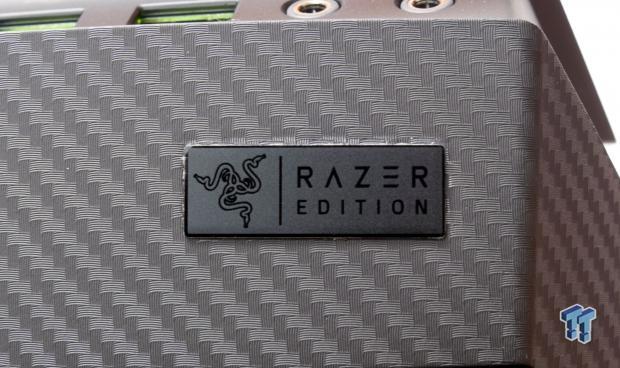
While many people are perfectly comfortable building their own gaming PCs, most people would rather avoid the headaches that accompany the process and avoid the DIY segment altogether. In recent years, high-end gaming PCs have become more popular, and competition more fierce, as the number of PC gamers grows exponentially. Lenovo has traditionally focused on home and business users, but their Y-Series gaming desktops are targeted at hardcore PC gamers. Through collaboration with Razer, the IdeaCentre Y900 RE was born.
While some in the industry might not care to admit it, there are many benefits to buying a gaming desktop from a well-known PC vendor. For starters, buyers will not have to worry about incompatibilities born out of the endless list of available components and still maintain the ability to have their desktop customized to meet their needs. Learning to build a PC also takes time, and many people would rather spend that time playing games. Warranty and support for the entire system are also benefits, but there are also certain solutions that are not readily available on the DIY market because of compatibility concerns.
Along with the IdeaCentre Y900 RE, Lenovo was nice enough to send over the matching Lenovo Y27g RE 27" R1800 curved gaming monitor. Both the IdeaCentre Y900 RE and Y27g RE come in non-RE (Razer Edition) variants, so you might be asking yourself what Razer brings to the table. The answer is not simply "a well-known gaming brand name," and I will explore the answer in this review. As the holiday season approaches, many gamers might be thinking of upgrading to new systems to play the latest titles such as Battlefield 1, let's see what Lenovo and Razer have up their sleeve.
Specifications

The IdeaCentre Y900 RE is built with some of the fastest mainstream hardware components on the market, including the Intel Core i7 6700K and NVIDIA GeForce GTX 1080. The PC also comes with 16GB of DDR4, but our configuration only had a single 16GB stick. The Y900 RE also comes with a 256GB NVMe PCI-E 3.0 x4 SSD and a 2TB HDD for storage. The unit uses Killer based wired and wireless networking, with support for Killer Double Shot Pro. The PC chimes in at 16.9x7.5x16.5 inches and 23.1lbs.
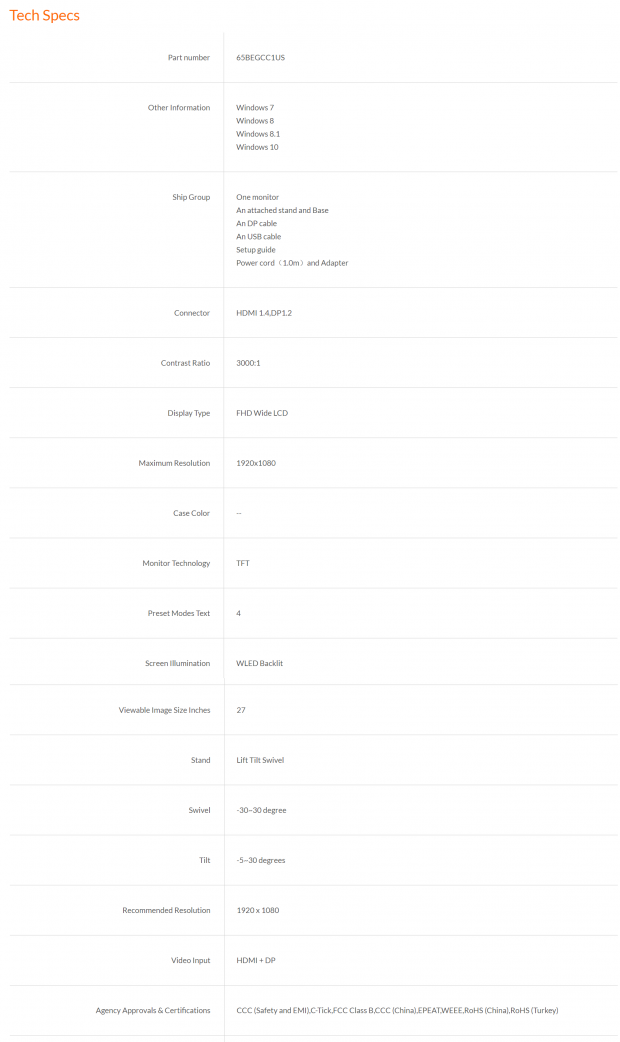
The Lenovo Y27g RE 27" 1800R curved gaming monitor supports resolutions up to 1920x1080 with a 3000:1 contrast ratio. It's illuminated by a WLED backlight and maintains a 27-inch viewable image size. The monitor does have a noticeable curve I will cover later in the review. The monitor also has RGB LEDs at the rear to illuminate the wall behind the display. The monitor also supports NVIDIA G-Sync and refresh rates up to 144Hz.
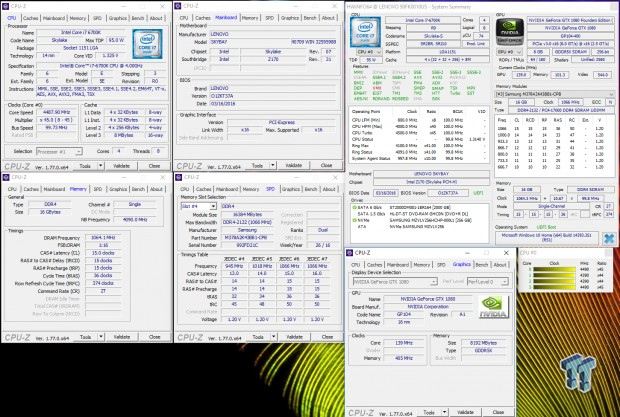
While the IdeaCentre Y900 RE will run at the 6700K's stock frequency of 4GHz, you can overclock it through the included software. Pressing the overclock button will apply a 4.5GHz overclock.
Pricing
The IdeaCentre Y900 RE in this configuration costs roughly $2499.99, and the Lenovo Y27g RE costs $649.99.
Physical Overview
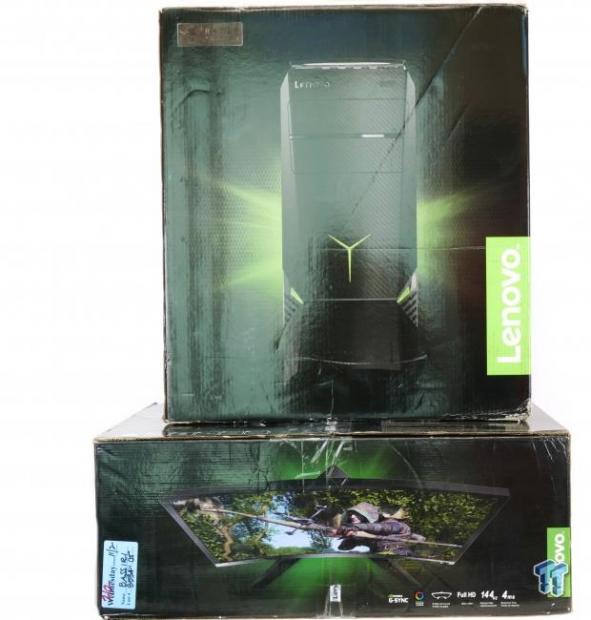
Both the desktop and monitor come in Razer themed boxes, which supply a good amount of protection for the components inside.
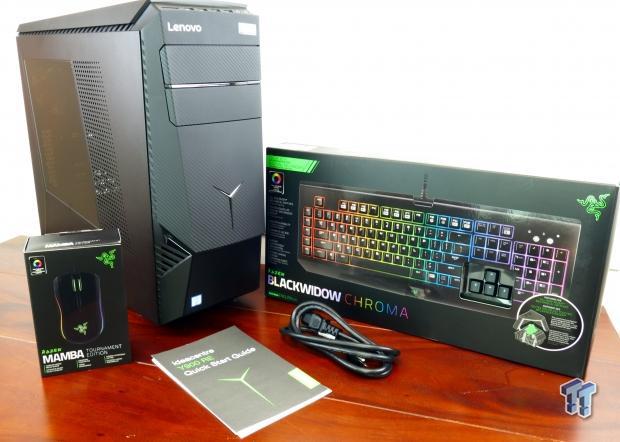
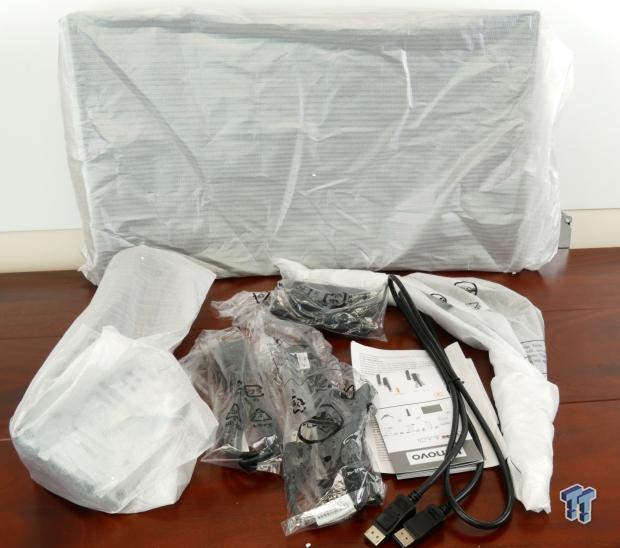
The PC is protected by large Styrofoam inserts, and around these inserts are the boxed Razer Mamba Tournament Edition gaming mouse and Razer Blackwidow Chroma gaming keyboard. The monitor is also encased in Styrofoam and comes with many cables and supports for the display.
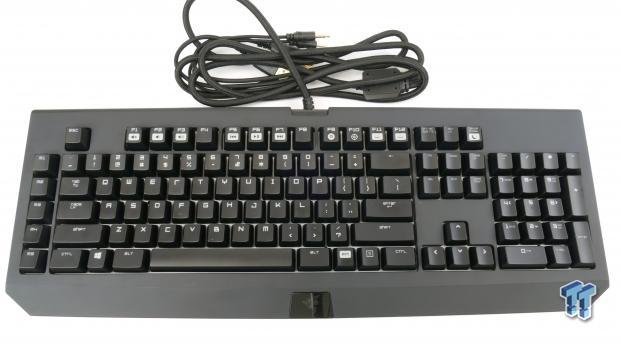
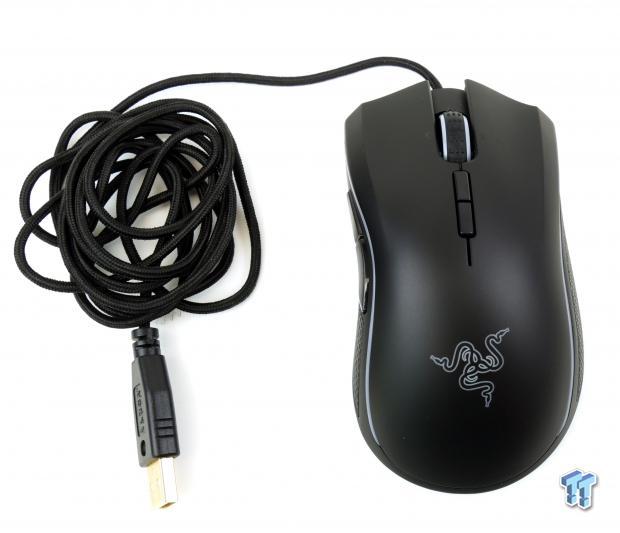
The Razer Blackwidow Chroma gaming keyboard uses Razer's mechanical switches, and each key has a built-in RGB LED which can be programmed independently of other keys. The Razer Mamba Tournament Edition gaming mouse has a 5G gaming mouse sensor with support for up to 16,000 DPI; it also has some nice built-in RGB LEDs. I will show off the RGBs in both products later in the article.
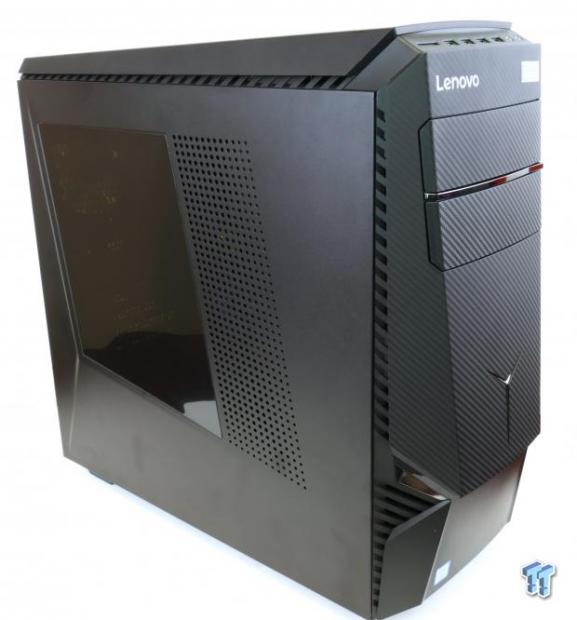
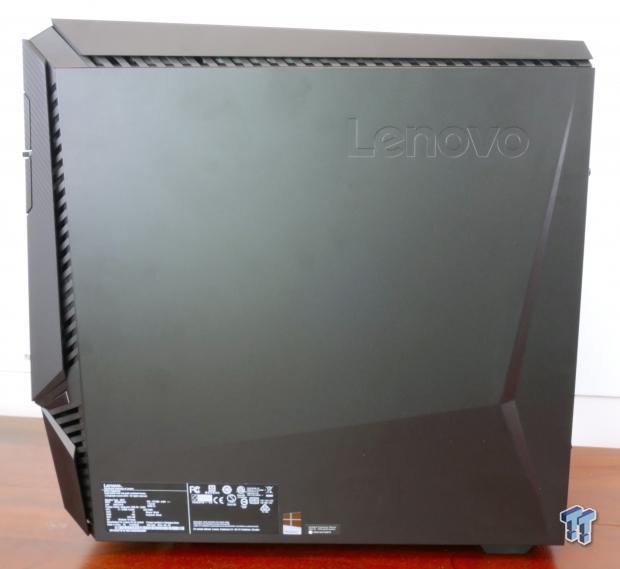
The side panel of the Y900 RE has some ventilation holes and a tempered glass window, and the front of the unit has a carbon fiber pattern and a centered Lenovo "Y" logo with RGB lighting. The right side of the unit is bare of any features, and all along the sides and top are ventilation ridges.

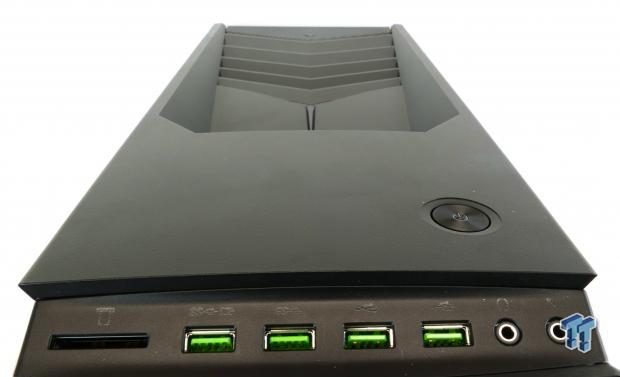
The rear of the unit features an exhaust fan that uses anti-vibration plugs, the IO panel, GPU outputs, and PSU AC power port. You should always use the video outputs of the GPU and not those of the motherboard. The IO panel of the motherboard features two USB 2.0 ports, HDMI, DVI, VGA, four USB 3.0 ports, 1Gbit LAN port, and 7.1 audio outputs with S/PDIF out. The GPU provides one DVI port, one HDMI port, and three DisplayPorts.
The PSU has an AC power port with two status LEDs. A slider switch at the top of the unit can release the lock on the side panel so you can open the unit. The front/top of the unit features four USB 3.0 ports (one is a charging port), an SD card reader, headphone and mic jacks, and the power button.
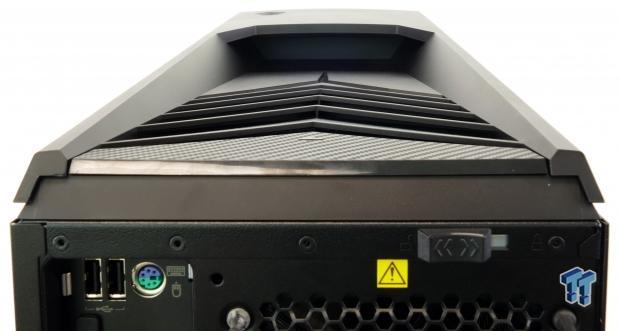
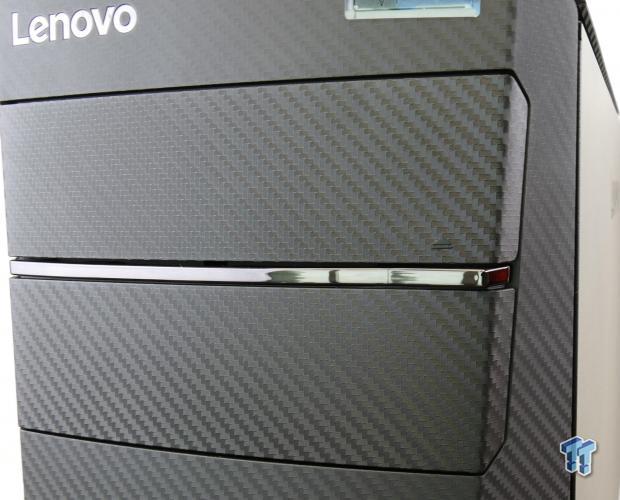
An angled shot of the rear/top of the unit reveals the angled venting and handle section so you can move the PC with a single hand. The Y900RE comes with a DVD ODD and pressing the edge of the silver panel will open the drive bay.
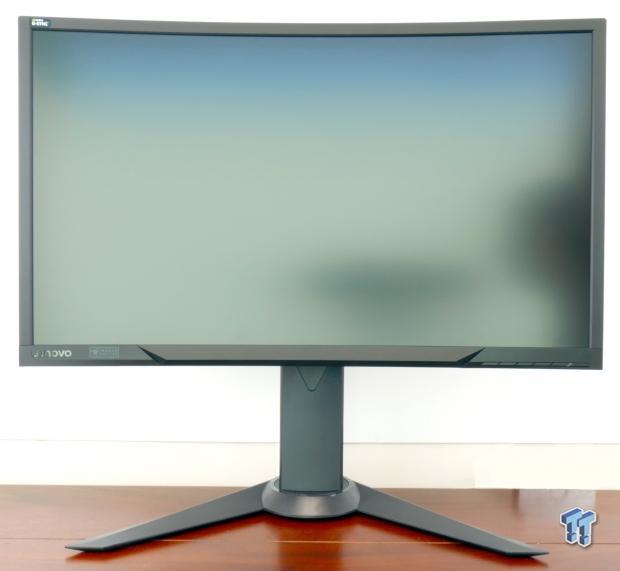
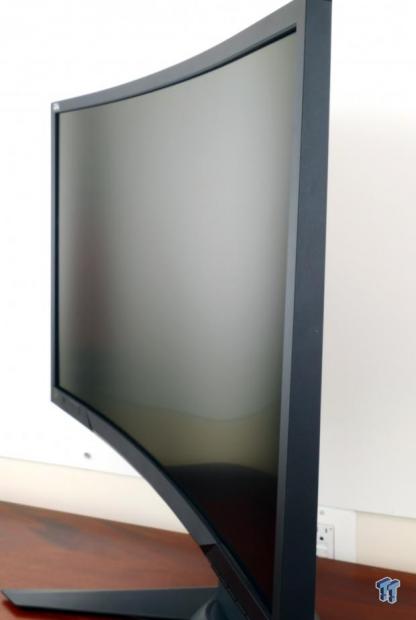
The monitor's curve is noticeable and quite glorious. If you are worried about the curve messing with your visual perception, I can attest that you quickly get used to it and don't notice it.
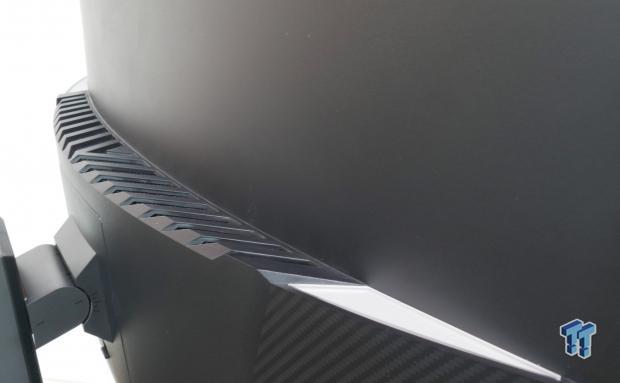
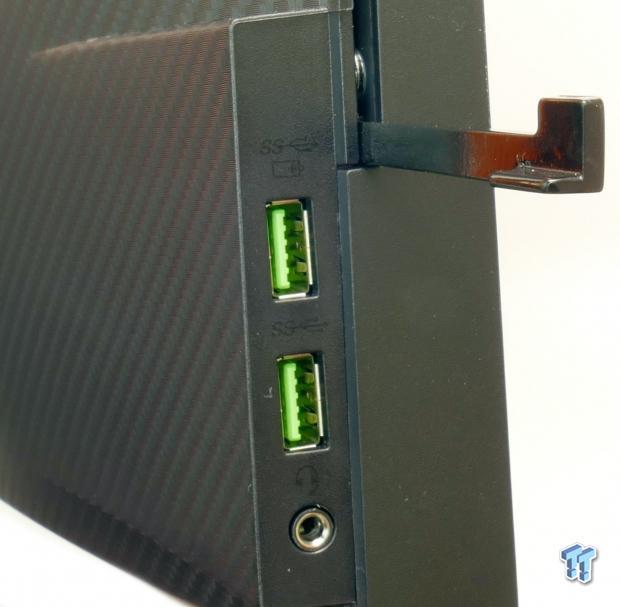
At the rear of the monitor are two large RGB LED panels, and you can configure them through the included software. The monitor also has two USB 3.0 ports, a headphone jack, and a headphone holder.
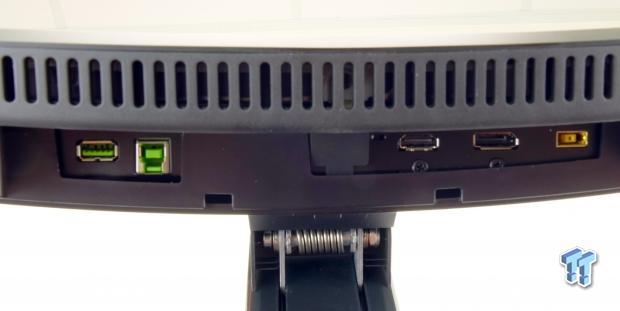
The monitor has two USB 3.0 ports, HDMI, DisplayPort, and DC power jack.
Physical Overview Continued
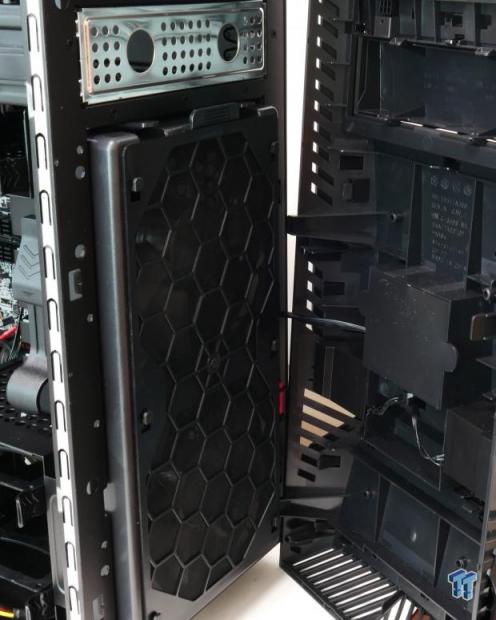
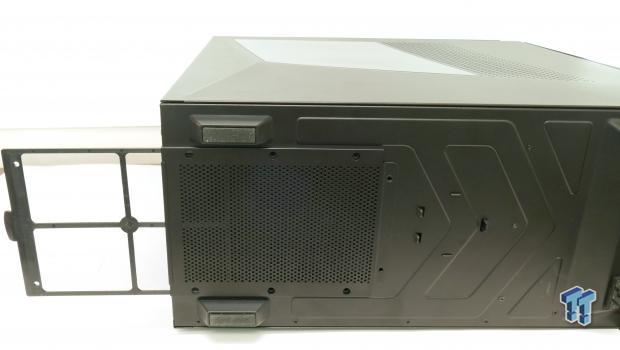
The front panel of the PC can be removed easily to reveal a dust filter, which you can clean. There is also a dust filter at the bottom of the PC; it slides out easily for cleaning. Four rubber feet ensure the PC doesn't slide around a smooth floor.
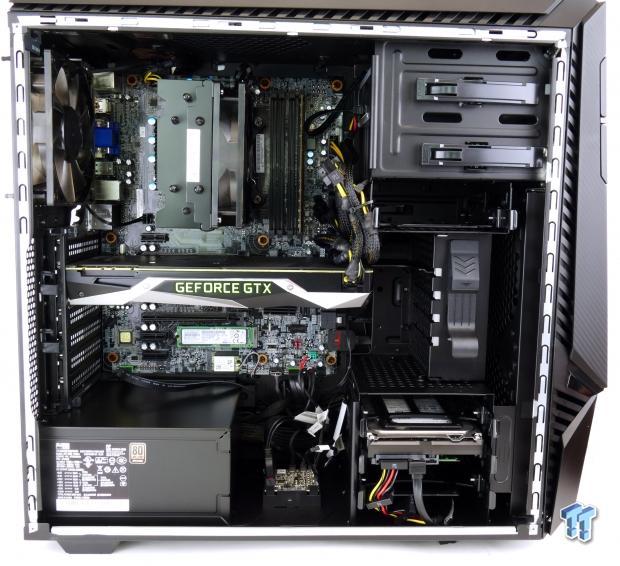
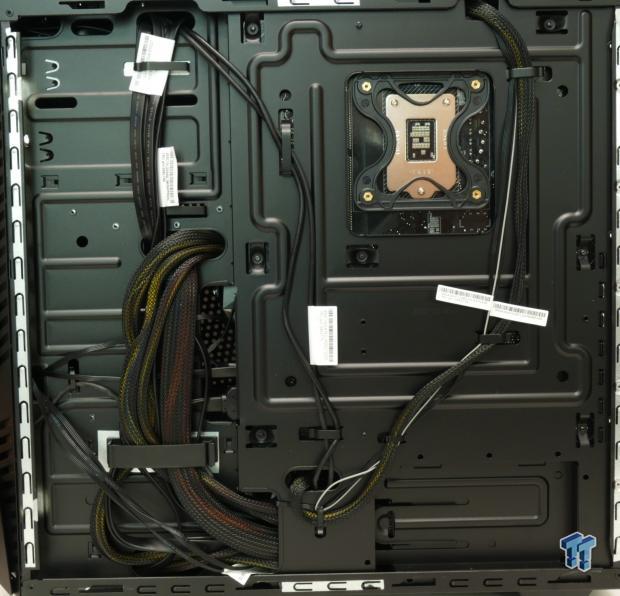
Opening the IdeaCentre Y900 RE is very easy, and cable management is very well done to ensure unobstructed airflow.
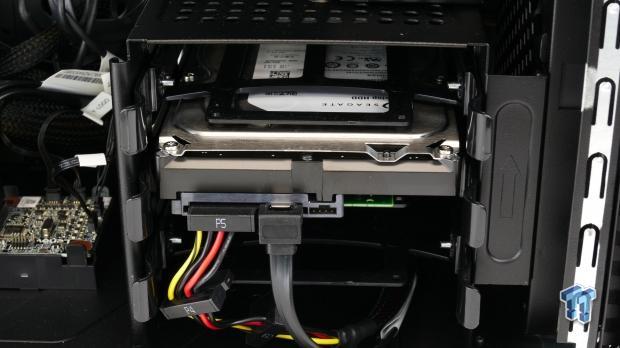
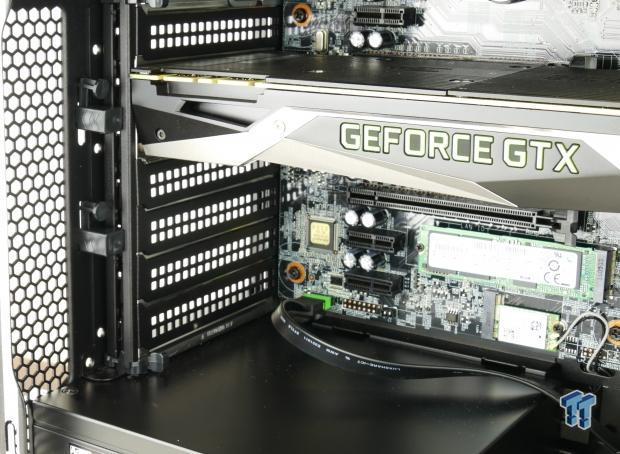
Replacing or upgrading the drives or any other devices is very easy to do through tool-less brackets and slides. If you want to remove the GPU or add in other GPUs/PCI-E devices, Lenovo offers a tool-less PCI-E bracket lock system.
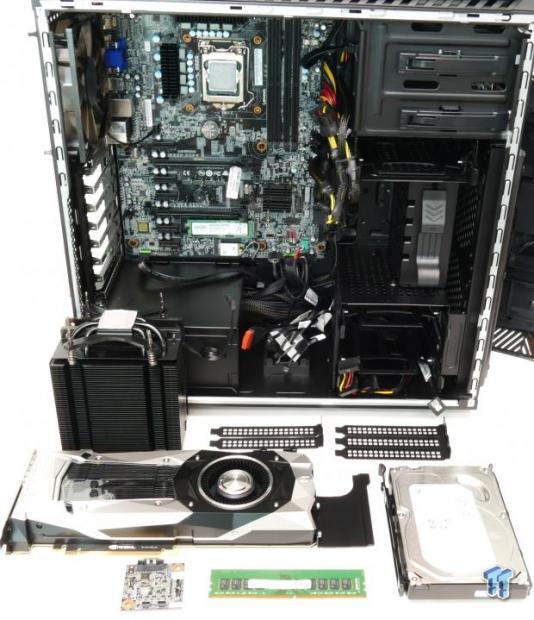
The Lenovo Y900 RE uses a single 16GB DDR4 DIMM instead of two 8GB modules, supposedly for more upgrade potential (more available slots), the downside is that you won't get dual-channel memory support without a second 16GB module. The GTX 1080 is attached to a bracket to ensure it does not droop. The CPU cooler should support a decent overclock. Lenovo has also added an RGB LED controller, since the PC itself has RGBs built in all over the place.
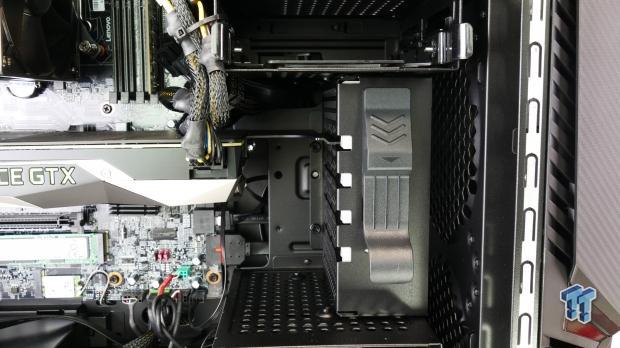
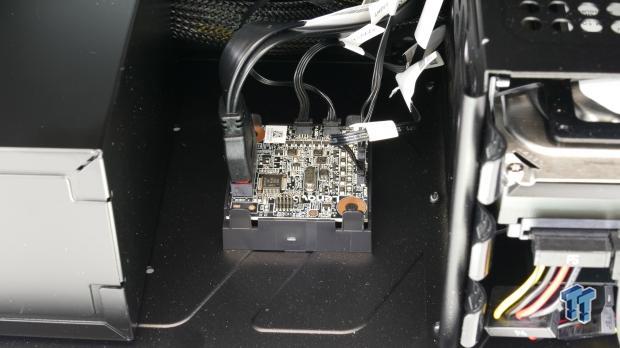
Lenovo has an ingenious system to ensure that the heavy GPU does not droop down and damage the PCI-E slot or get damaged in transit. There is space for extra GPUs to utilize this anti-droop system. The RGB LED controller mentioned earlier supports four sets of LEDs and uses a custom connector that attaches to the motherboard.
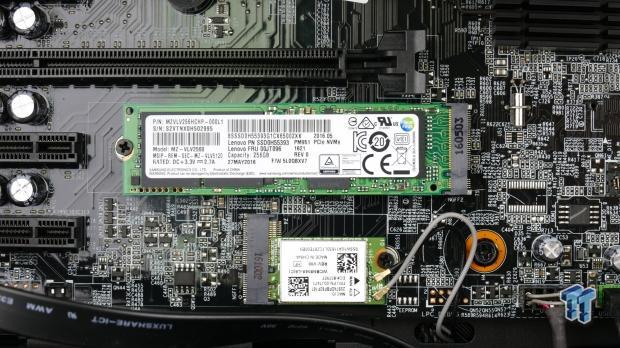
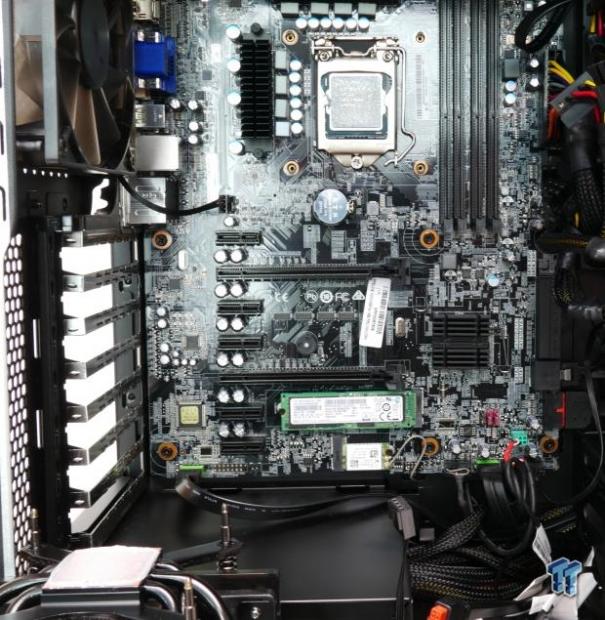
The NVMe PCI-E 3.0 x4 SSD is a Samsung PM951. The wireless card is a Killer Wireless-AC/BT 4.0 1535. The thermal paste application is more than enough and shows solid spreading. The VRMs for the CPU are cooled by heat sinks, and there is room for adding in three more sticks of RAM and one more full-sized GPU.
Software and BIOS
Software
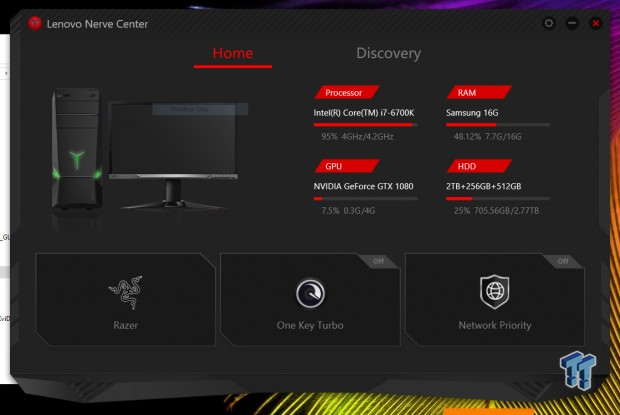
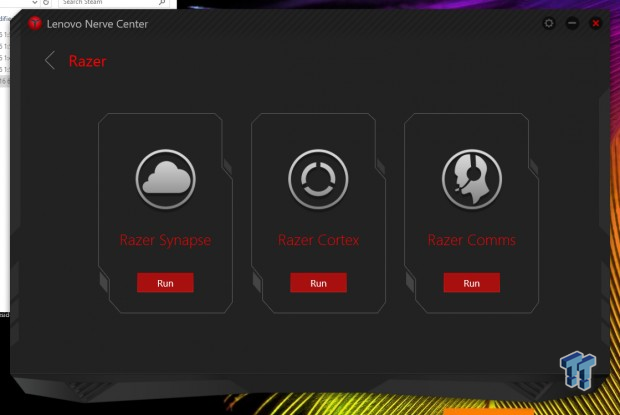
Lenovo Nerve Center is a custom made application for the IdeaCentre Y900 RE that ties together the desktop, Razer customization, Razer peripherals, and even the monitor. You can control everything from overclocking to monitor RGB LED lighting from this single application.
There are three main buttons; Razer (for all Razer peripherals), One Key Turbo (for overclocking the desktop), and Network Priority (for the Killer networking features). The Razer menu reveals three other menus; Razer Synapse (lighting and hardware control), Razer Cortex, and Razer Comms.
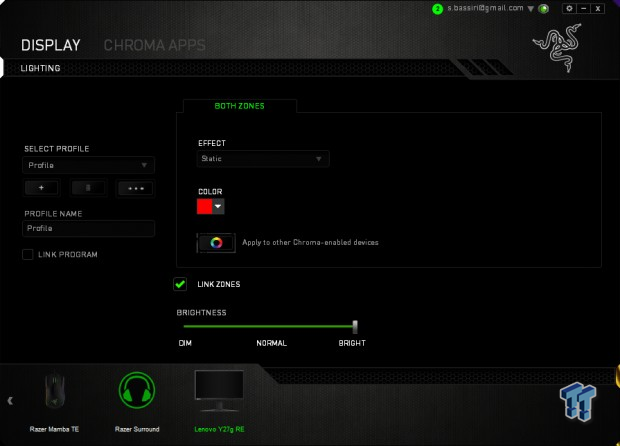
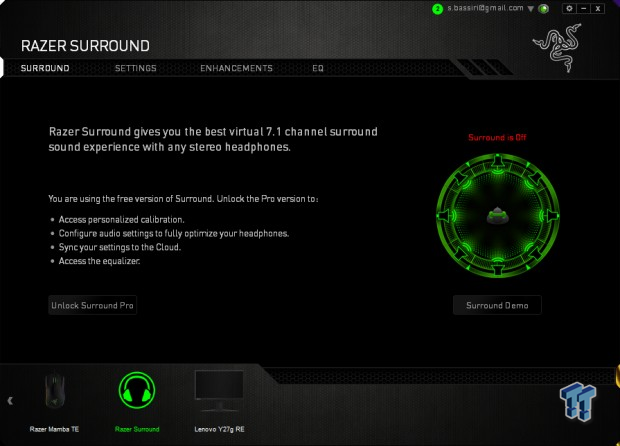
Starting with Razer Synapse, each connected Razer peripheral (including the Lenovo/Razer branded monitor) can be controlled and customized. You can even link the monitor's lighting to programs and control effects, color, and brightness. Razer Surround is a virtual audio effects program, and you can use that to spice up some audio effects.
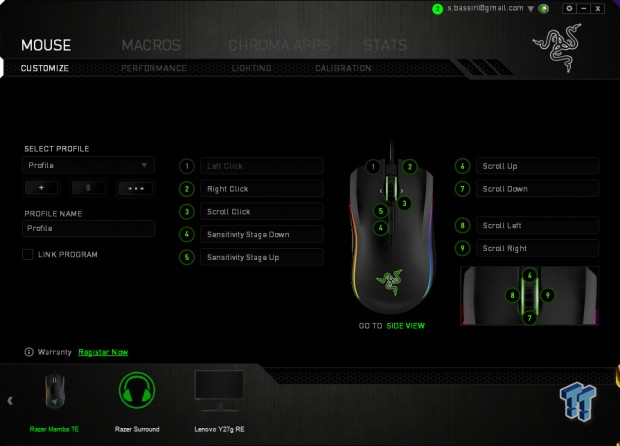
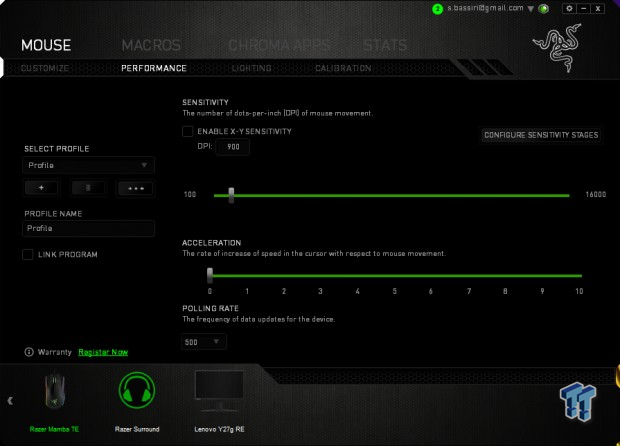
The Razer Mamba TE mouse can be customized and even calibrated from the Razer Synapse program. You can also control the mouse's performance and set custom DPI and acceleration linked to individual programs.
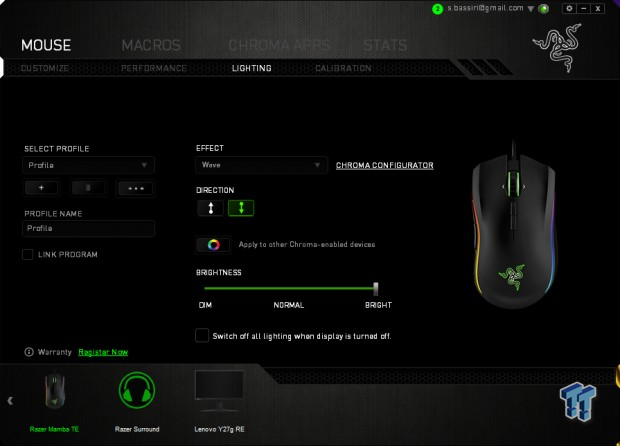
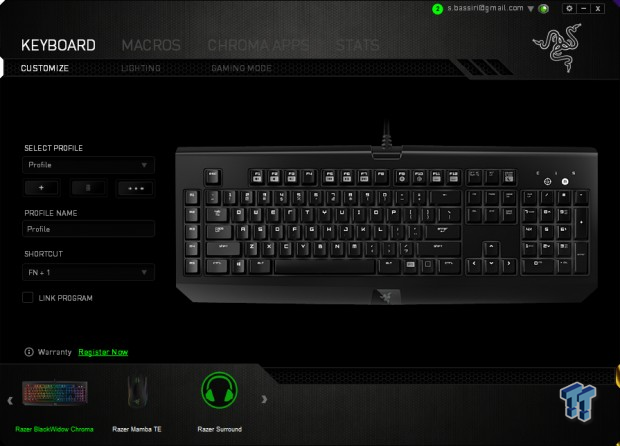
The lighting effects, especially "Wave," have a lot of depth and produce interesting patterns. The BlackWidow Chroma keyboard can also be customized.
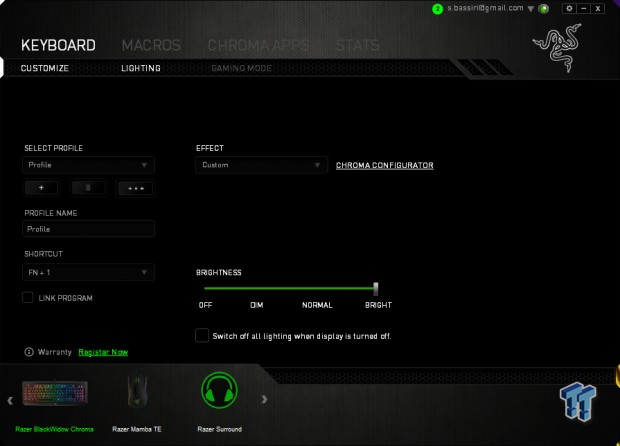
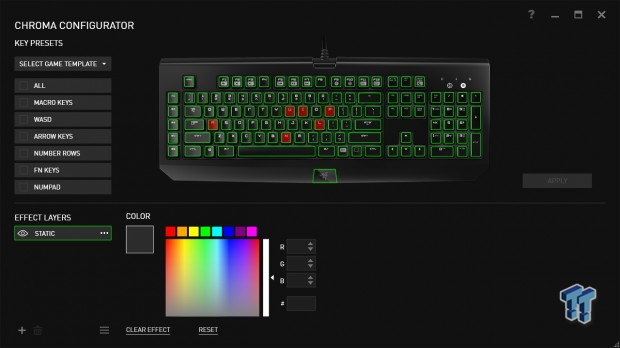
Keyboard lighting is a bit more involved than the lighting options for the other devices because you can individually control the lighting of each key.
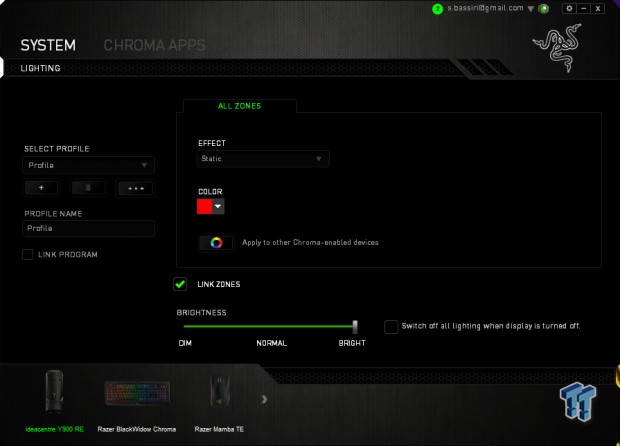
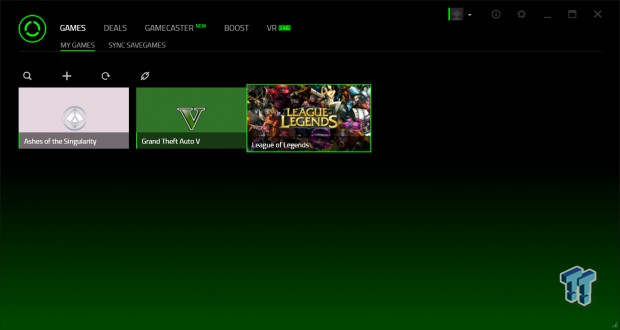
The IdeaCentre Y900 RE also has RGB LEDs built into it. Razer Cortex will centralize all of your games from different clients and acts as a game manager.
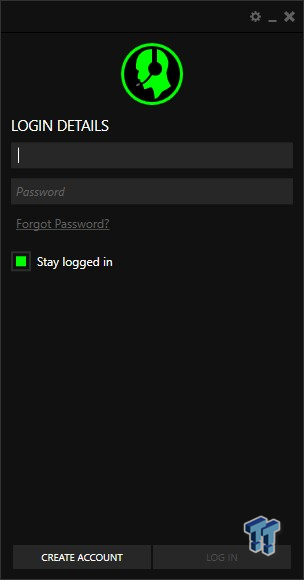
Razer Comms is a VOIP and Chat client.
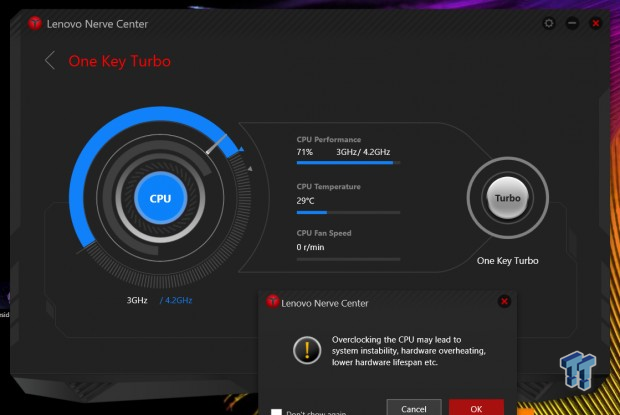
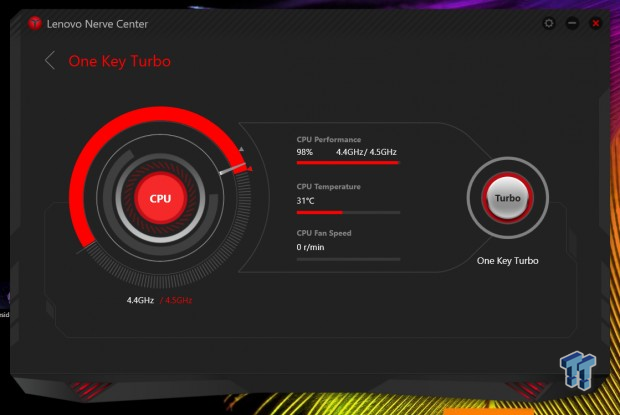
The second main level button under the Lenovo Nerve Center is the One Key Turbo program, which allows you to quickly and easily overclock the system with a single click. A restart isn't required to apply the overclock, but the overclock will take until you disengage it.
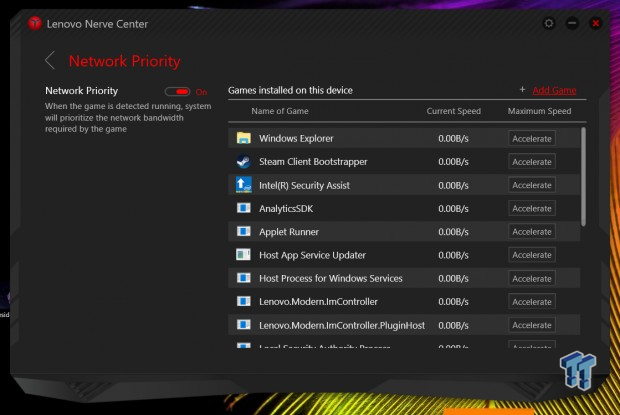
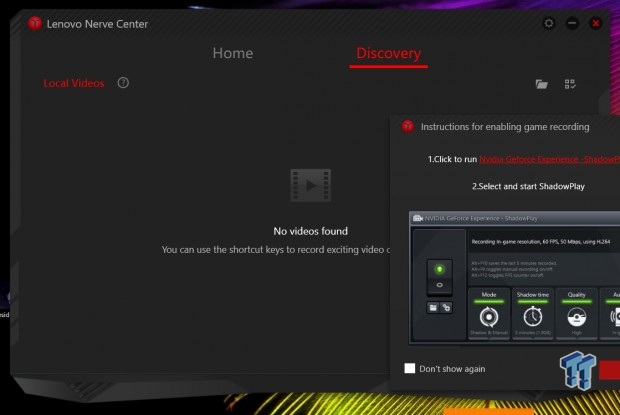
The third main level button will take you to the Network Priority section where you can prioritize game traffic. The Lenovo Nerve Center also has a Discovery section to guide you through all the features of your new gaming PC.
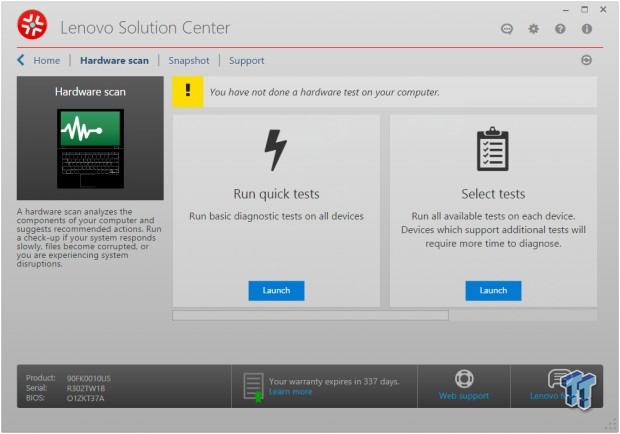
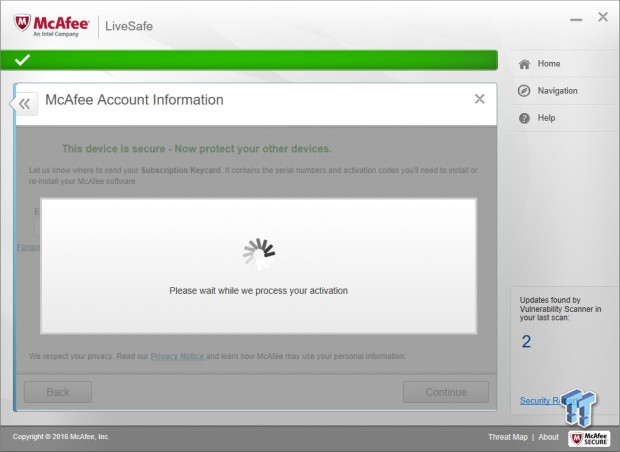
The Lenovo Solution Center is present on all the Lenovo products I have reviewed; it's where you can diagnose any problems and get product support. McAfee came installed.
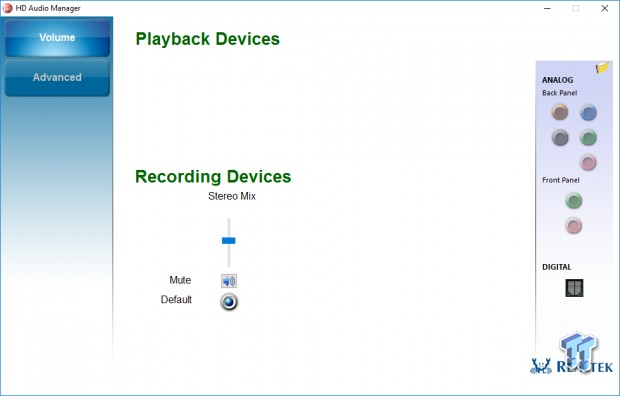
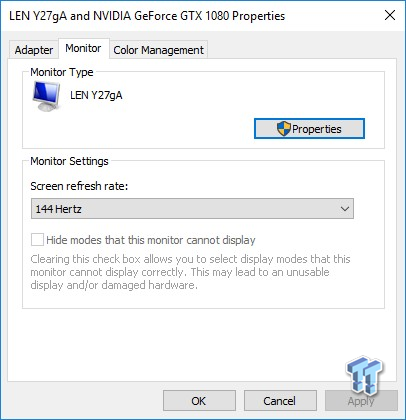
The audio solution is based on Intel and Realtek hardware, and you can access some settings through the HD Audio Manager. You need to install the drivers for the Lenovo Y27g if you want it to show up in the Nerve Center, and you can increase the refresh rate to 144Hz through the monitor properties menu.
BIOS
The BIOS is loaded with everything you might expect. However, unlike some other OEM PCs that lock down any overclocking settings, the Lenovo IdeaCentre Y900 RE allows you to tinker a little bit with the overclocking parameters.
Of course, you cannot tinker like you could with a custom built desktop, but you can tune things a little bit. That being said, you don't need to use the BIOS for overclocking the CPU, the One Key Turbo button in the Lenovo Nerve Center should be good enough.
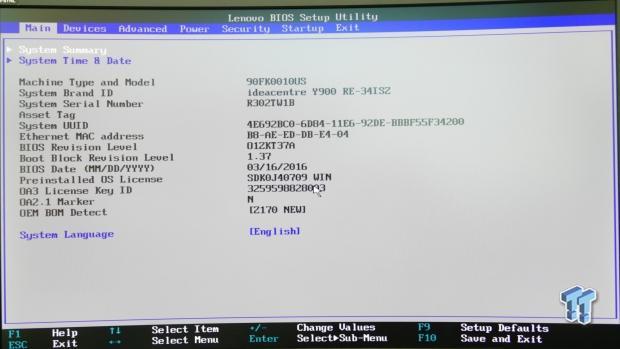
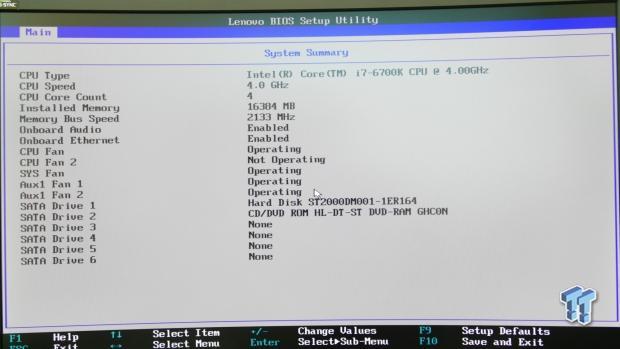
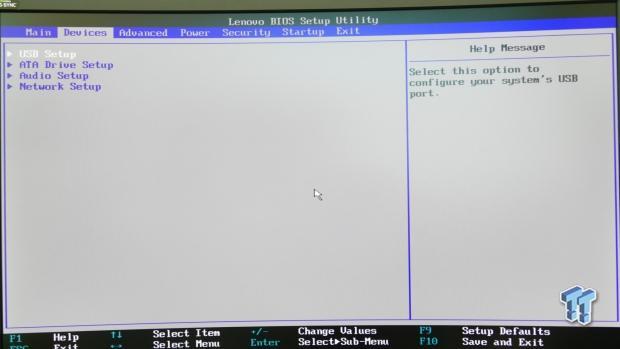
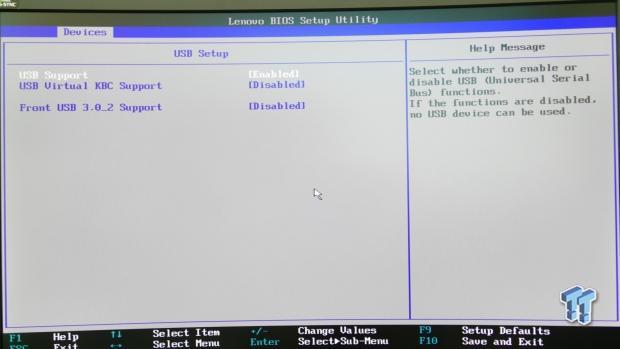
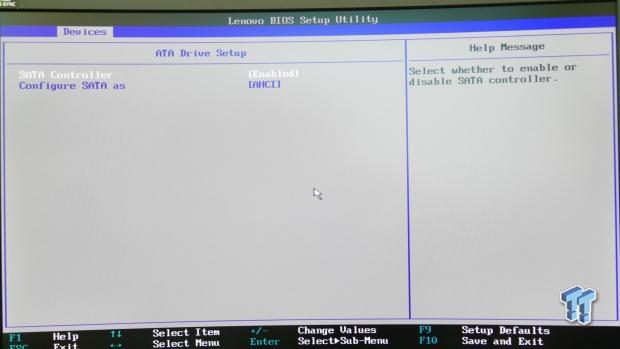
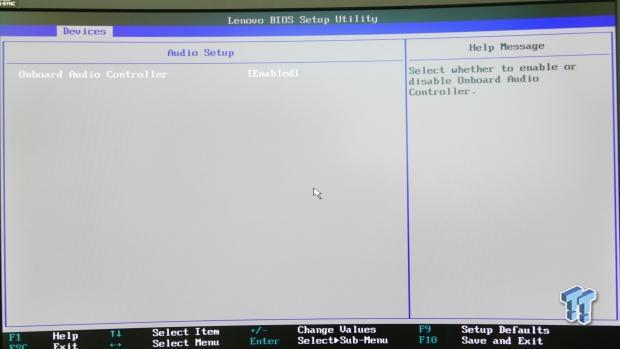
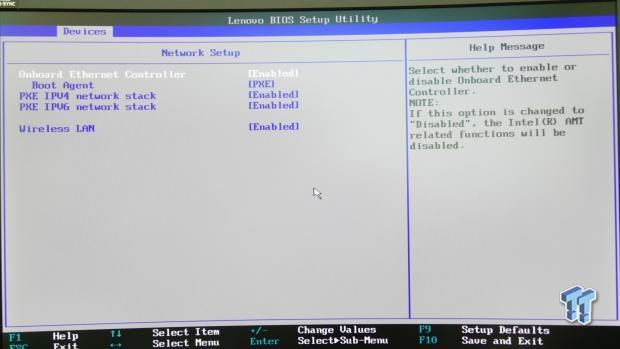
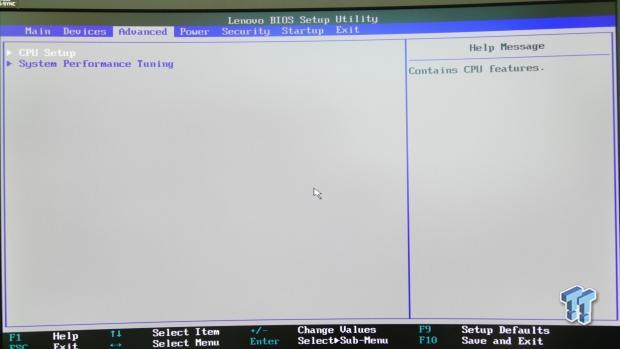
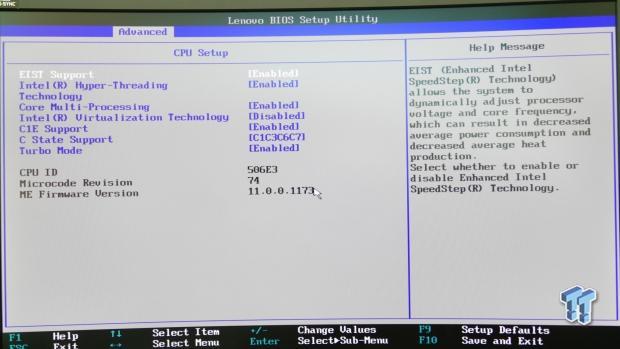
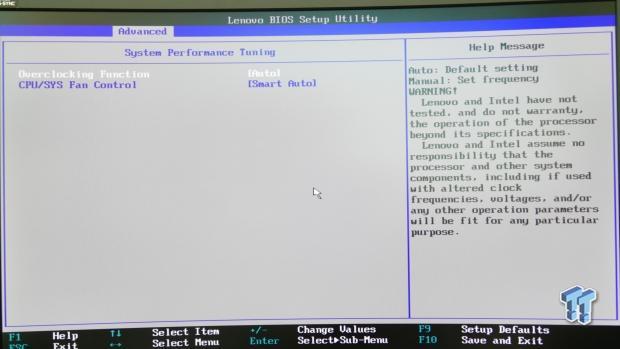
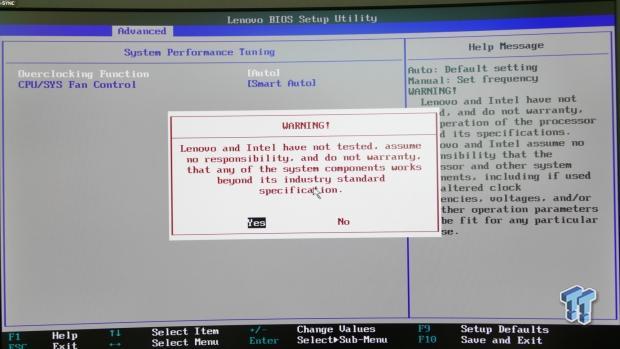
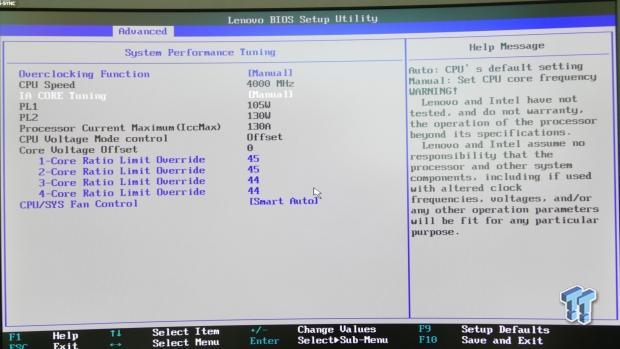

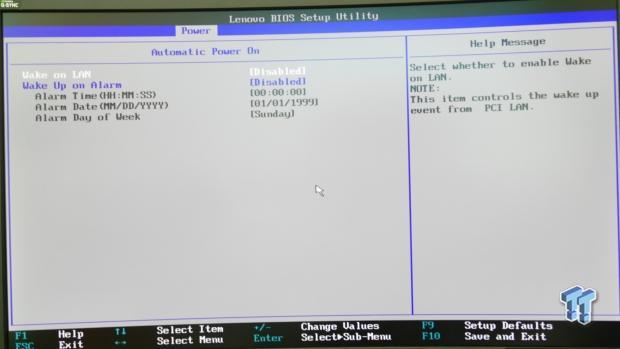

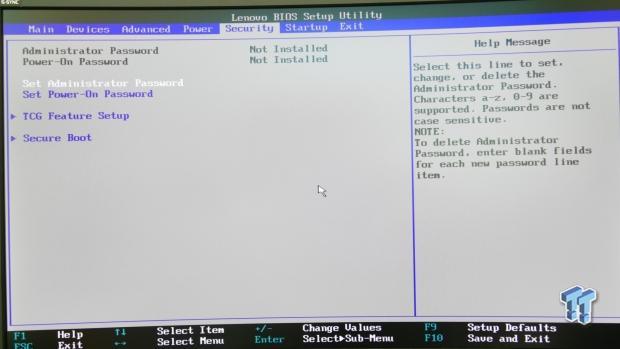
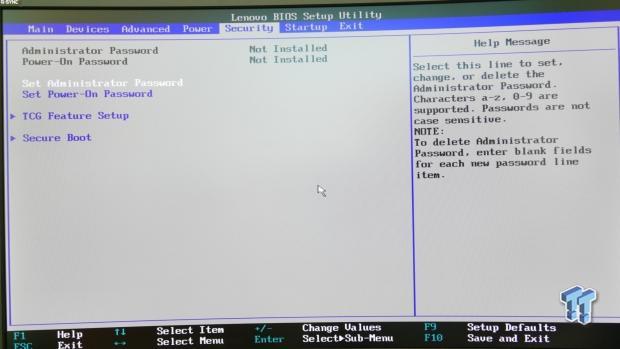
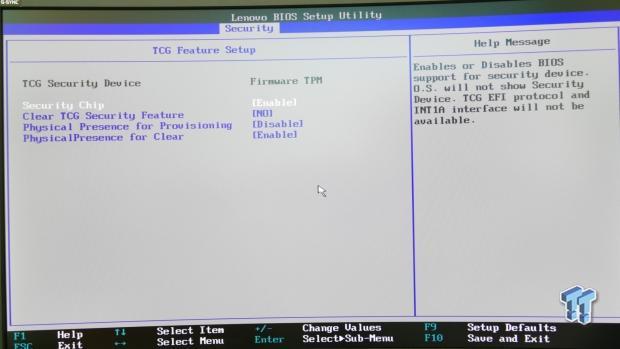
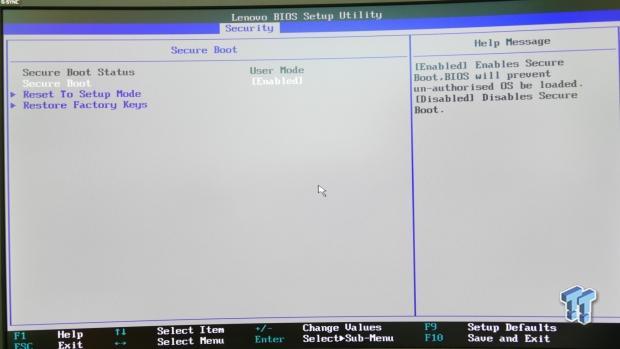
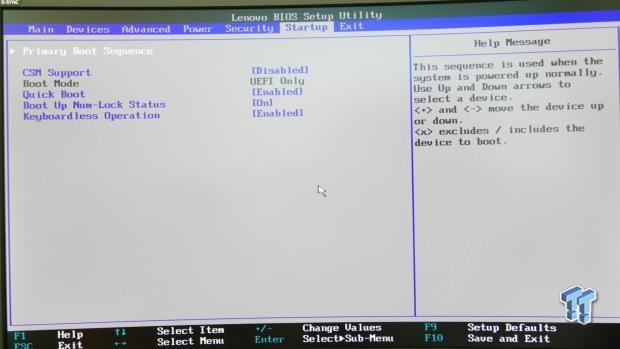
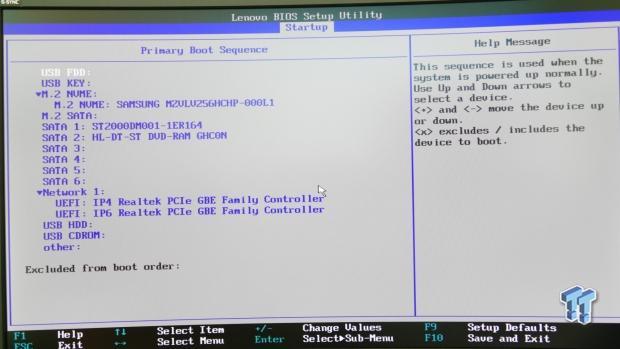
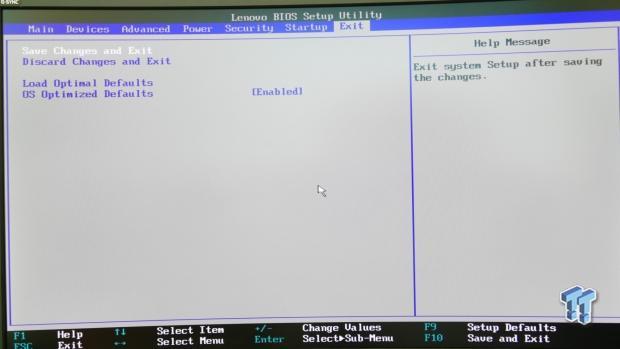
Test Setup & System Performance Benchmarks
Steven's Gaming System Test Setup
- System: Lenovo IdeaCentre Y900 Razer Edition Desktop
- Monitor: Lenovo Y27g Razer Edition Curved Monitor
- Keyboard: Razer Mamba Tournament Edition Gaming Mouse
- Mouse: Razer BlackWidow Chroma Gaming Keyboard
- Headset: Corsair VOID RGB Wireless Gaming Headset
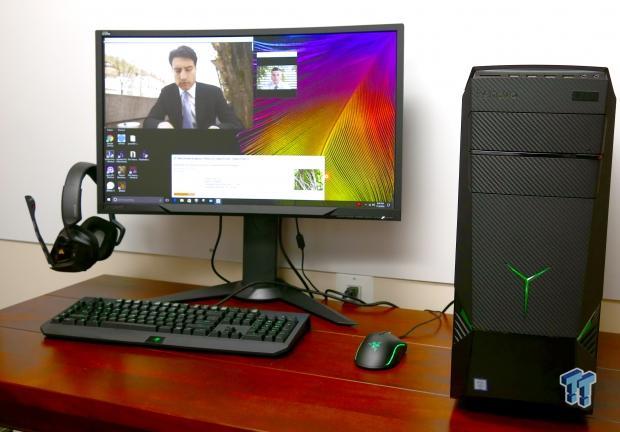
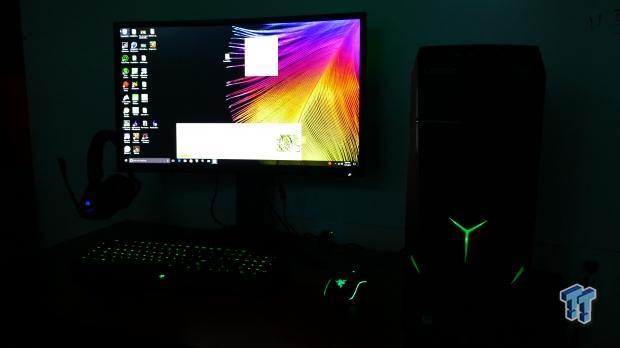
Through collaboration between Razer and Lenovo, the IdeaCentre Y900 RE and Lenovo Y27g RE match up very well with the Razer gaming keyboard and mouse. The lighting effects are also very cool when you turn the lights out.
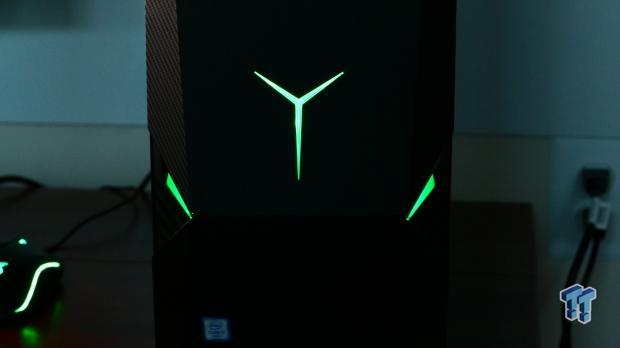
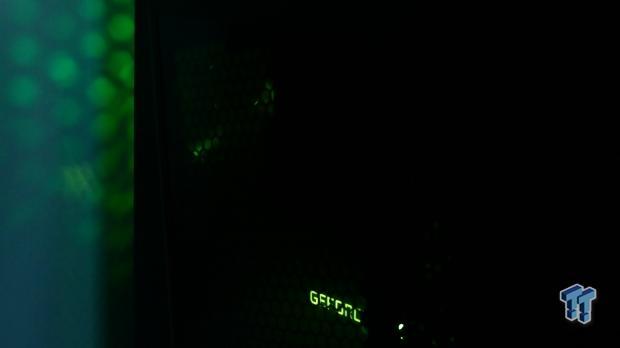
The Lenovo "Y," slits on either side of the desktop, and the rear fan all have RGB LEDs that can be customized through the Lenovo Nerve Center program.
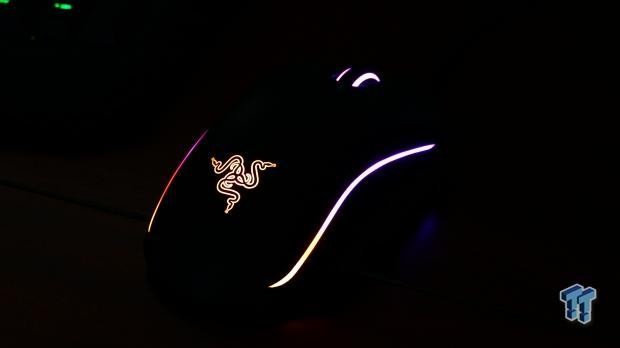
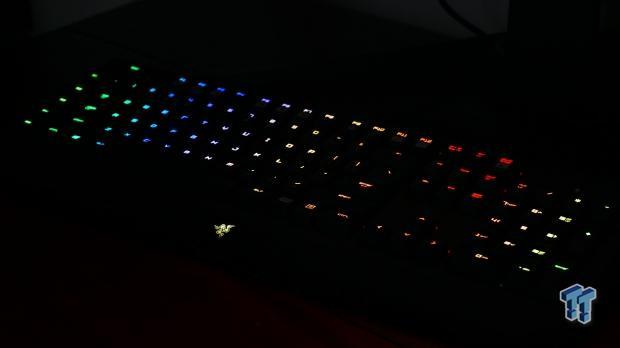
The Razer gaming keyboard and mouse also light up quite nicely in the dark.
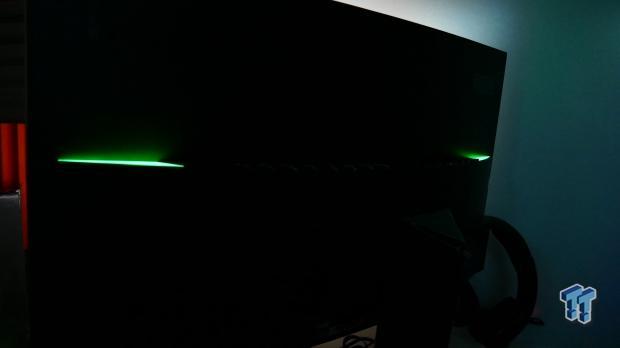
Even the monitor has RGB LEDs, but they aren't that bright.
CPU, Memory, and System Benchmarks
CINEBENCH 11.5
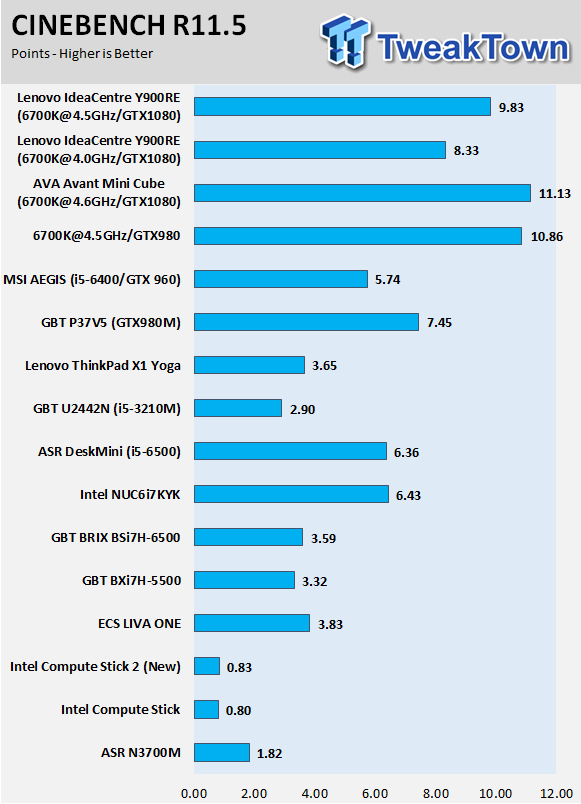
wPrime
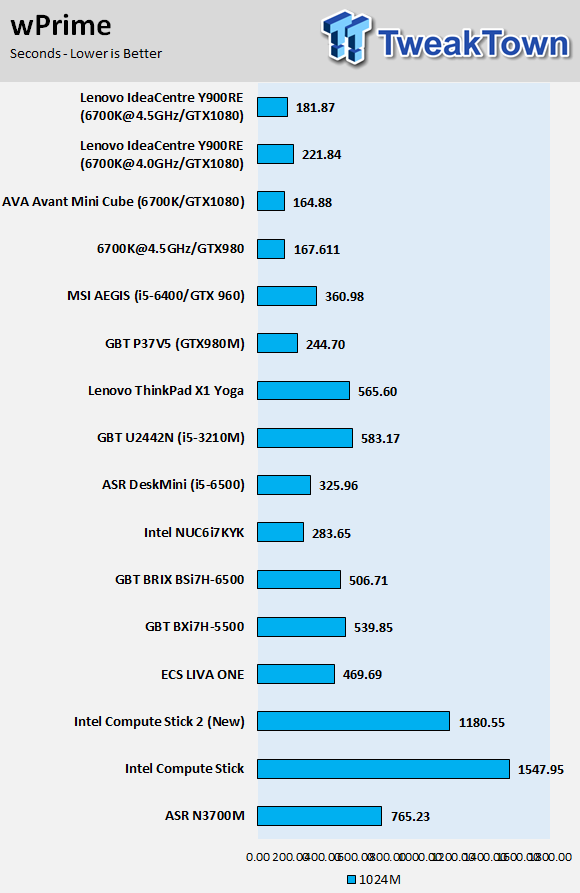
AIDA64 AES and HASH

AIDA64 Memory
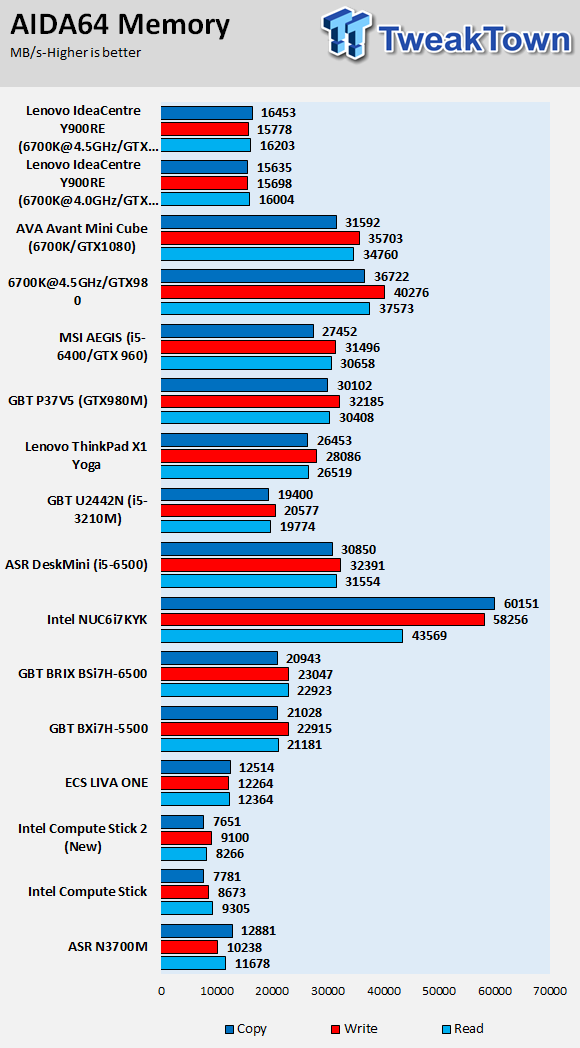
PCMark8 Home
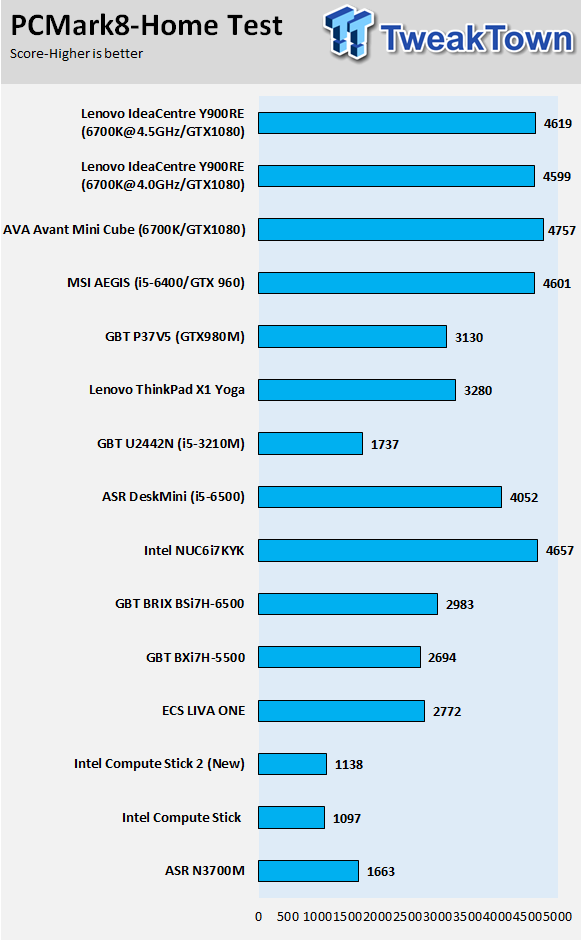
Handbrake 4K and 720P Transcoding
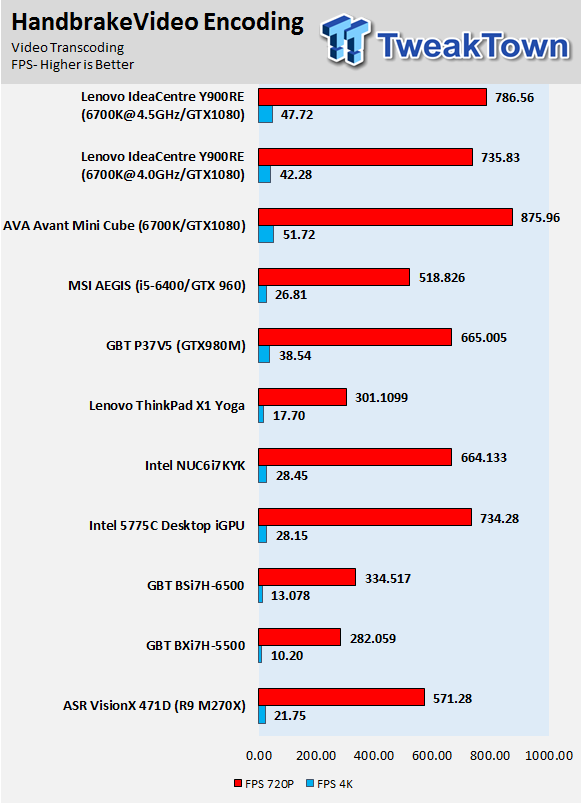
WebXPRT 2015
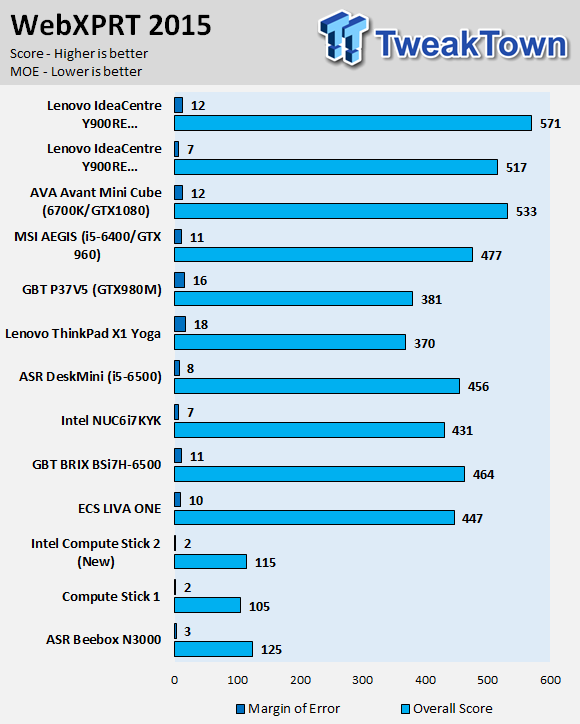
I was a bit puzzled on why my performance results for the IdeaCentre Y900 RE were not in line with the rest of the stock and overclocked 6700K systems. I did not think that the single-channel memory configuration could have such an impact on the benchmark numbers, so I went ahead and replaced the single 16GB stick with two 8GB sticks. Low and behold, changing out the single 16GB module for two 8GB modules boosted performance in line with the other systems.
However, I decided not to include those dual-channel numbers in this review, because the system does not ship that way. That being said, will you notice the difference between one 16GB stick and two 8GB sticks in real life? The answer is probably no because the system's CPU and GPU are so powerful already.
Gaming Performance Benchmarks
UNIGINE Heaven 4.0
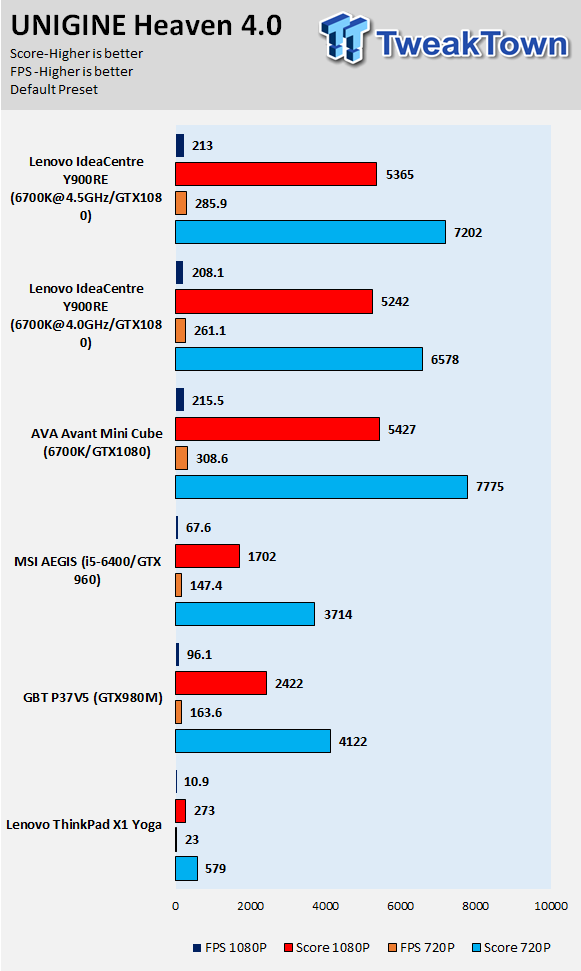
ResidentEvil 6
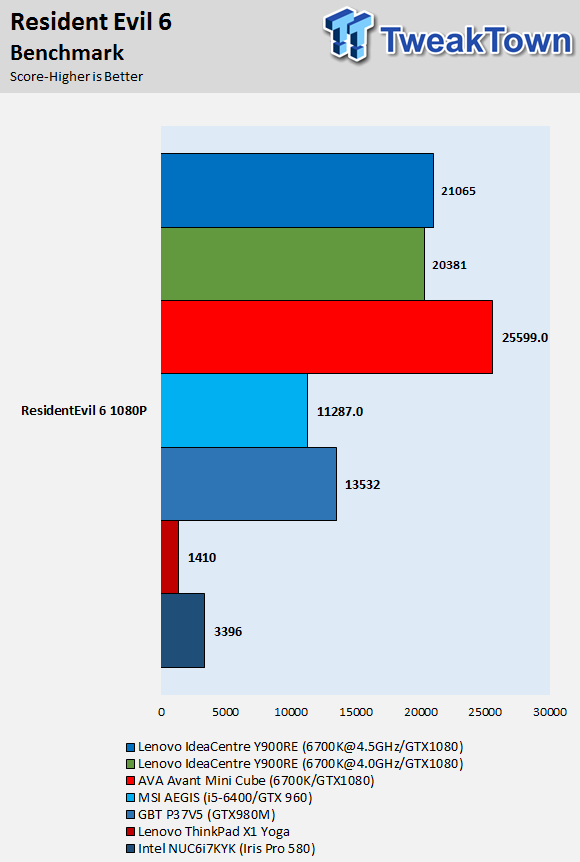
AIDA64 GPU Memory
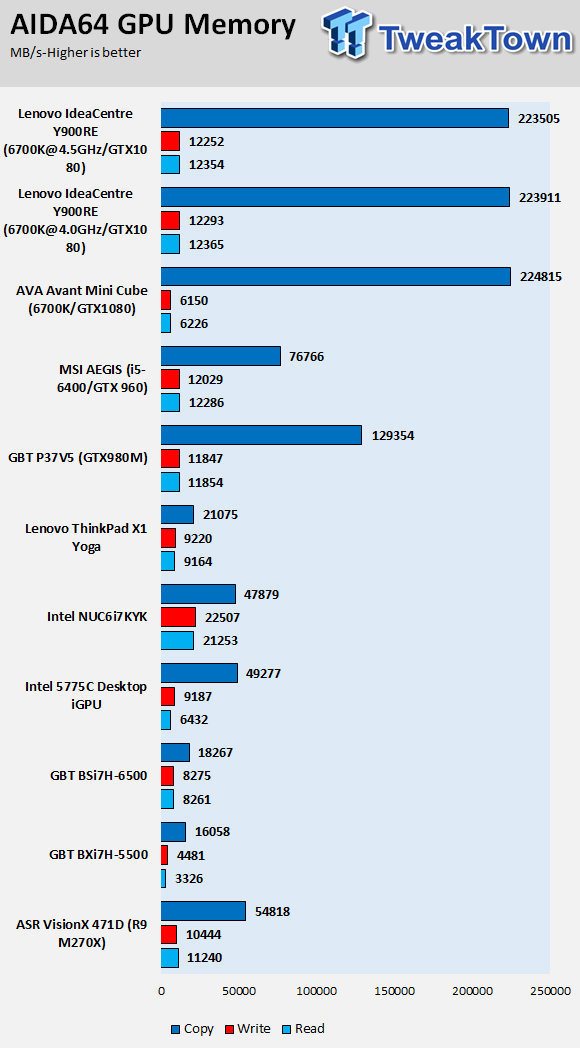
3DMark FireStrike
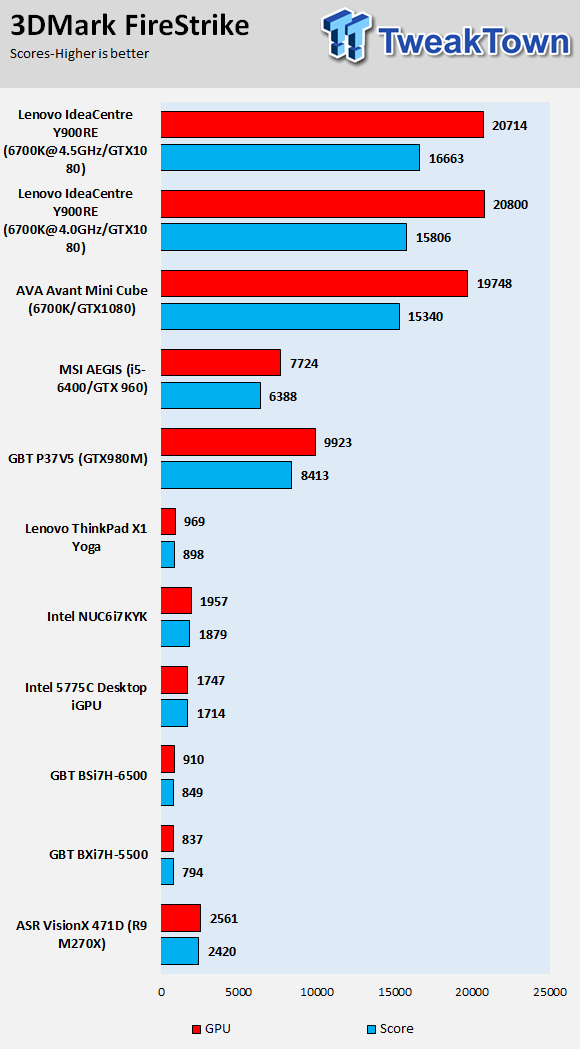
3DMark Cloudgate
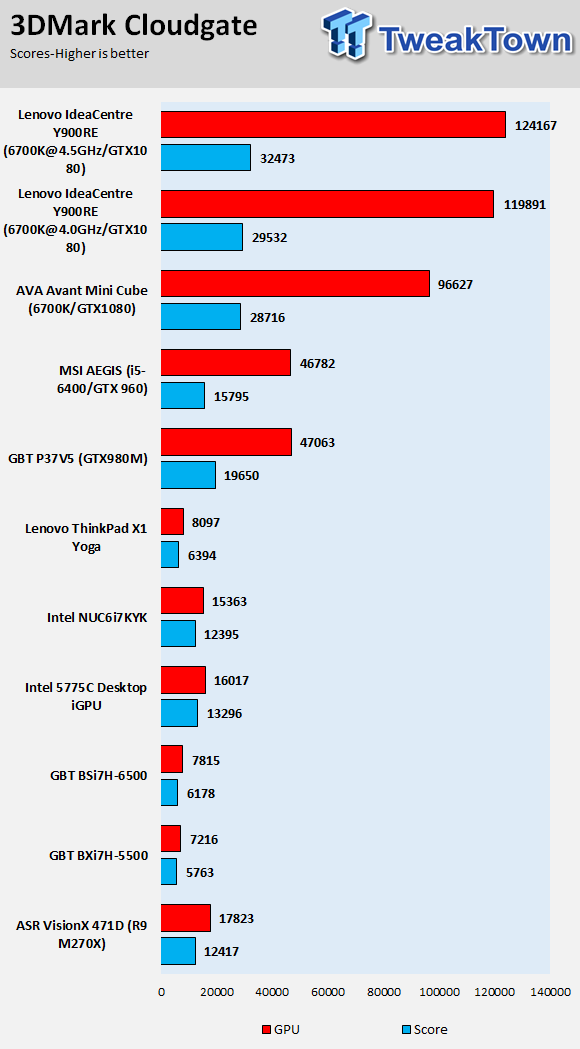
Ashes of Singularity
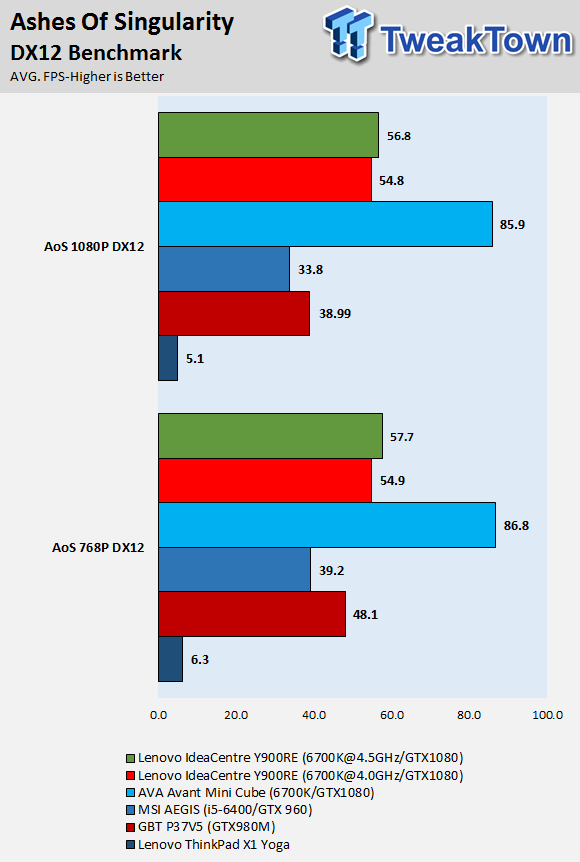
GTA:V
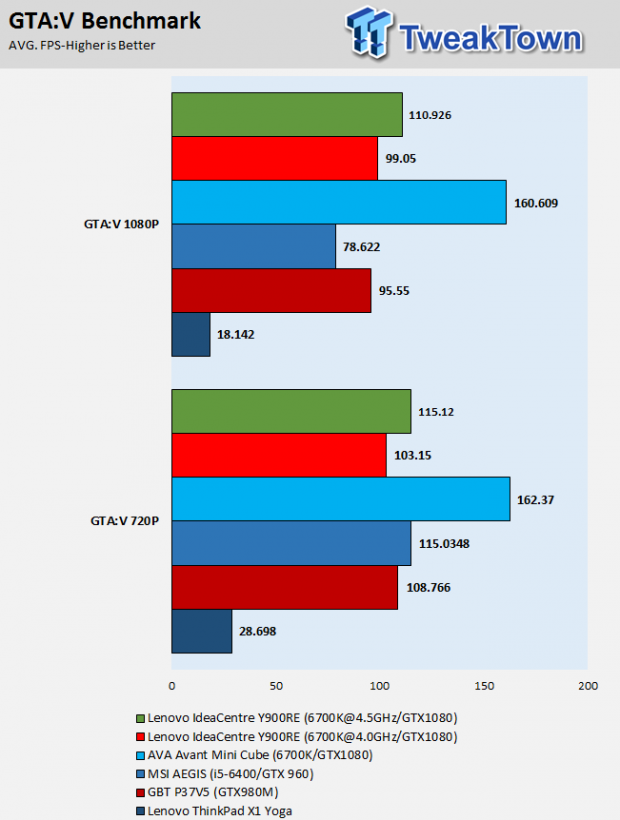
Final Fantasy XIV
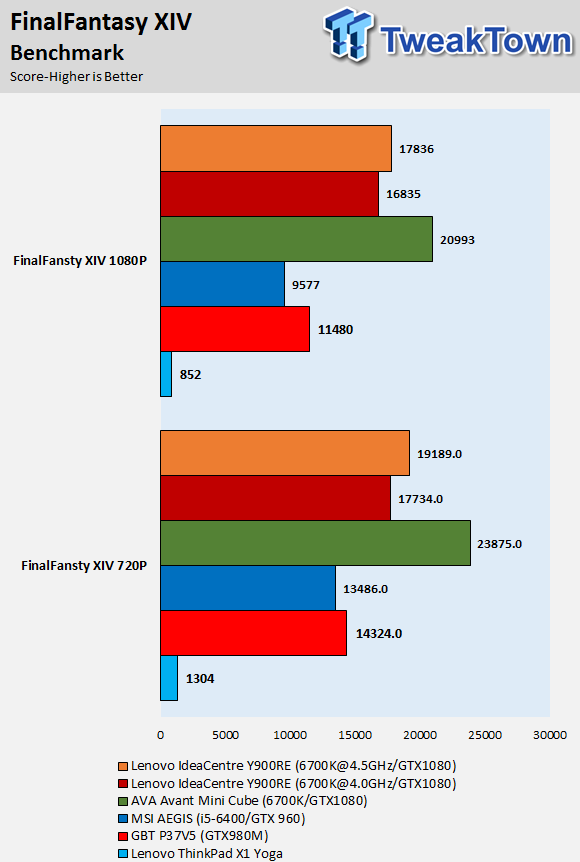
The GTX 1080 does much better with the overclocked 6700K, but the single-channel memory does knock off a few FPS in real-world gaming scenarios where the CPU is the bottleneck.
However, the FPS were high enough in games such as GTA:V, that you won't notice the difference too much.
-
System IO Performance
System IO Benchmarks
Internal Storage Read Test:
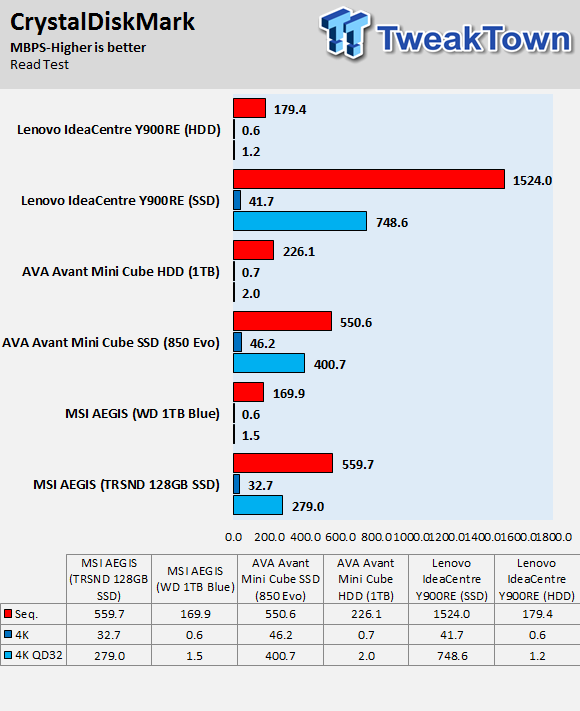
Internal Storage Write Test:
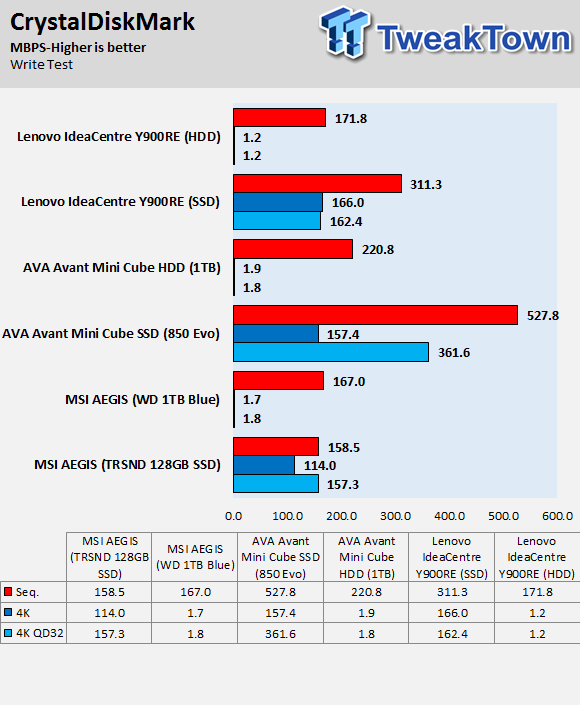
ixChariot Network Throughput:
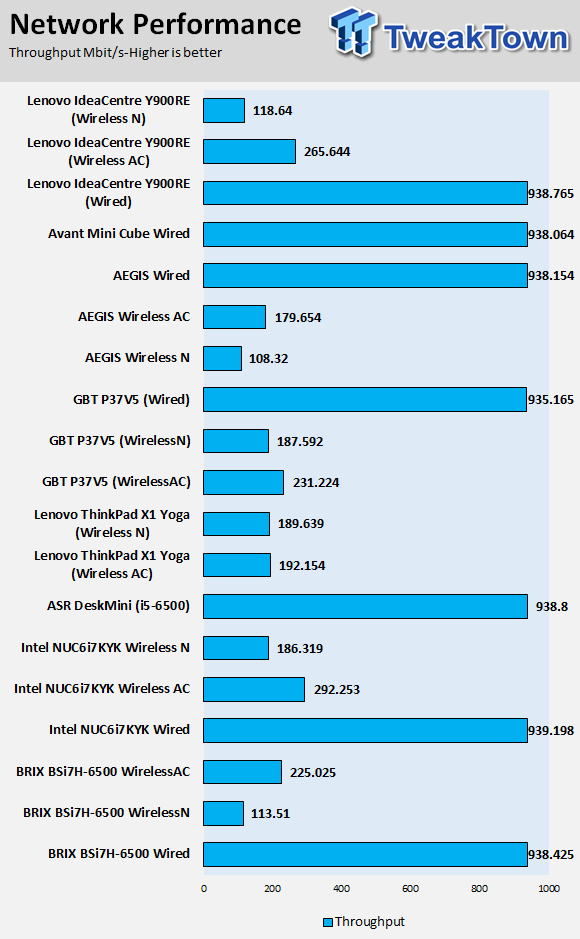
The IdeaCentre Y900 RE uses a Samsung PM951 as its SSD, and performance is in line with what Samsung advertises.
Network performance of the Killer networking hardware is where it should be.
Thermal Performance and Power Consumption
Thermal Imaging
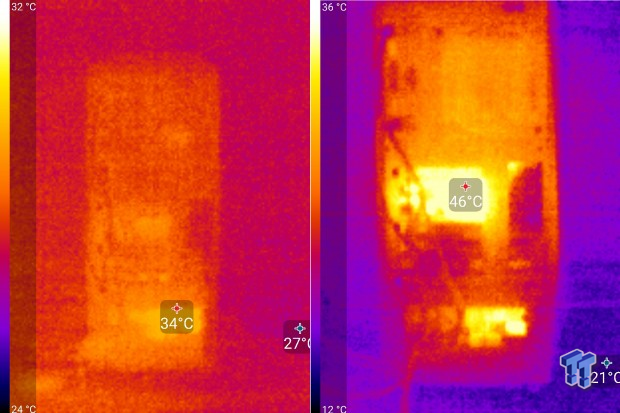
The idle and load shots above are of the rear of the unit. On the left, the desktop is idle, on the right the unit is at full load after 30 minutes of Furmark and IBT simultaneously.
As you can see, the GPU is the largest contributor of heat, which is to be expected since it is the single largest power consumer.

The side of the desktop does not get hot when load is applied. If anything, the temperature doesn't increase, but heat is more evenly dispersed.
Power Consumption
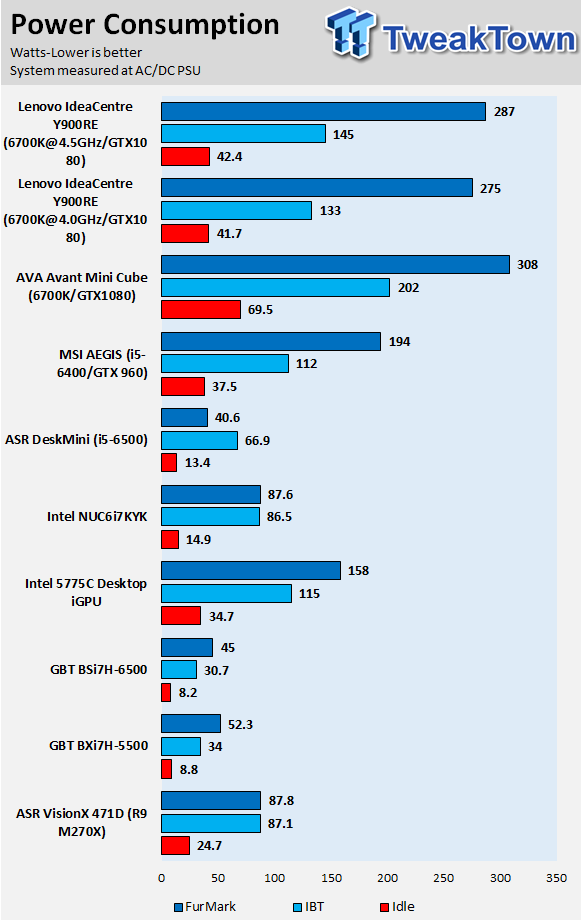
Compared to the other system with a 6700K and GTX 1080, the IdeaCentre Y900 RE is quite efficient.
What's Hot, What's Not & Final Thoughts
Here are key points about the IdeaCentre Y900 RE.
What's Hot
GTX 1080 and 6700K Combination: When you pair a 6700K and GTX 1080 and then overclock the 6700K to around 4.5GHz, the CPU bottleneck is alleviated, and the GPU can roam free, and that is what Lenovo offers in the IdeaCentre Y900 RE. The 6700K is currently the fastest mainstream CPU on the market, and the GTX 1080 is one of the fastest GPUs. The IdeaCentre Y900 RE will have zero problems providing a solid VR gaming experience.
Razer Flair: The included Mamba TE gaming mouse and BlackWidow Chroma keyboard are welcomed Razer enhancements to the IdeaCentre Y900 RE, but the integration of these peripherals and even the Y27g RE monitor into a single software program makes the IdeaCentre Y900 RE feel like a completed product. The RGB LEDs in all the products and tower is also a welcomed addition, and that little extra flair in the form of green USB ports and the Razer case badge is something Razer fans will enjoy.
Noise and Thermals: The unit doesn't get very loud, nor does it get too hot. Out of the many gaming desktops I have reviewed, the IdeaCentre Y900 RE is one of the quietest. The system utilizes large intake vents at the front and bottom of the unit, and if you are wondering, yes, they have removable dust filters. Lenovo also made sure to mount the fans with rubber fasteners, so that the vibration from the fans wouldn't add to the noise of the system. Altogether, the system runs cool and quiet.
Curved 144Hz Gaming with G-Sync: The Y27g Razer Edition gaming monitor is a beast. While 4K snobs might bring up the fact that the panel's maximum resolution is 1920x1080, it's very hard to find a curved 4K monitor with 144Hz refresh rate and G-Sync at this price point. The Y27g RE also has an R1800 curvature to help improve the viewing experience.
Centralized Software: The Lenovo Nerve Center is the go-to application for all the special features of the IdeaCentre Y900 RE. You can control all of your Razer peripherals from the program and even control the RGB LED lighting of the Y27g RE monitor. Overclocking is also done through the Lenovo Nerve Centre with a single click of the mouse. If you want to control network traffic and priorities, the Lenovo Nerve Center is where you do that.
What's Not
Single-Channel Memory: While it's true that more sticks of RAM mean less upgrade potential in the future, only one stick will limit the memory configuration to single-channel mode. Adding a second 16GB stick is highly recommended, and there will be noticeable performance boosts in games where the CPU is the bottleneck.
Y27g RE RGB LEDs: I was excited to learn that the 27" curved monitor had backside RGB LEDs to illuminate the wall behind it, but even in the dark the lights are almost too dim to produce a noticeable reflection.
Final Thoughts
The IdeaCentre Y900 RE is a very powerful and well thought out gaming PC and brings Lenovo into the gaming PC arena in a big way. Gamers want the latest in PC hardware, not the previous generation, and the IdeaCentre Y900 RE offers just that. Lenovo has also paid close attention to detail. The fans are mounted on rubber fasteners, the air intake vents have removable dust filters, and the GPU gets extra support through a custom anti-droop solution.
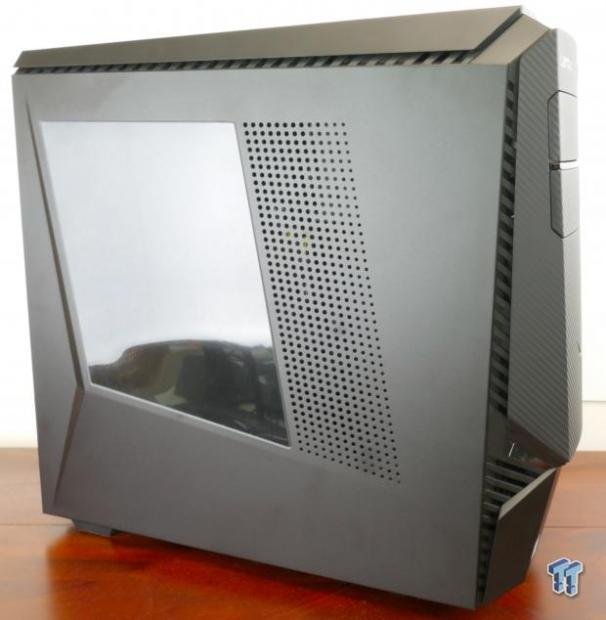
My only caveat with the IdeaCentre Y900 RE was with the configuration I received, because if they had used two sticks of 8GB memory or added in another 16GB stick, CPU performance could have been better.
Overall, the unit looks great and gets the job done. Many people are moving into the world of VR gaming, and they need the latest in NVIDIA Pascal GPU technology and a CPU to allow the GPU to reach its full potential, and the IdeaCentre Y900 RE provides that and more.
